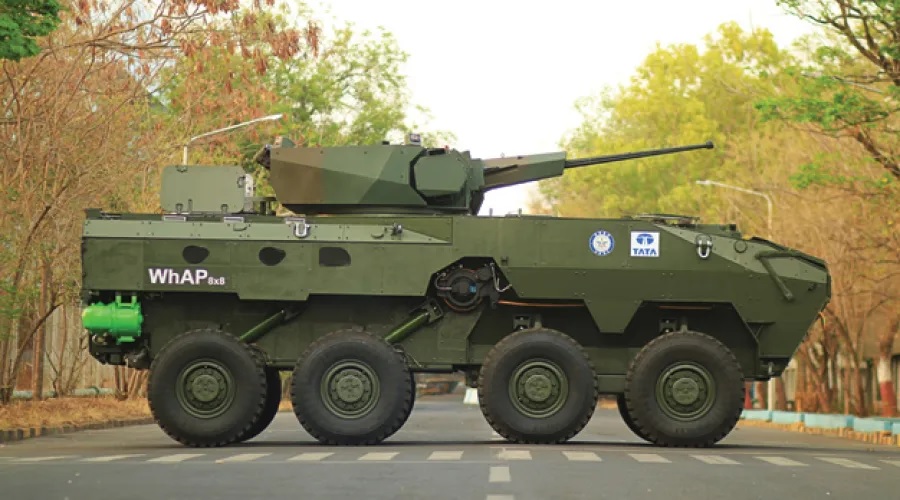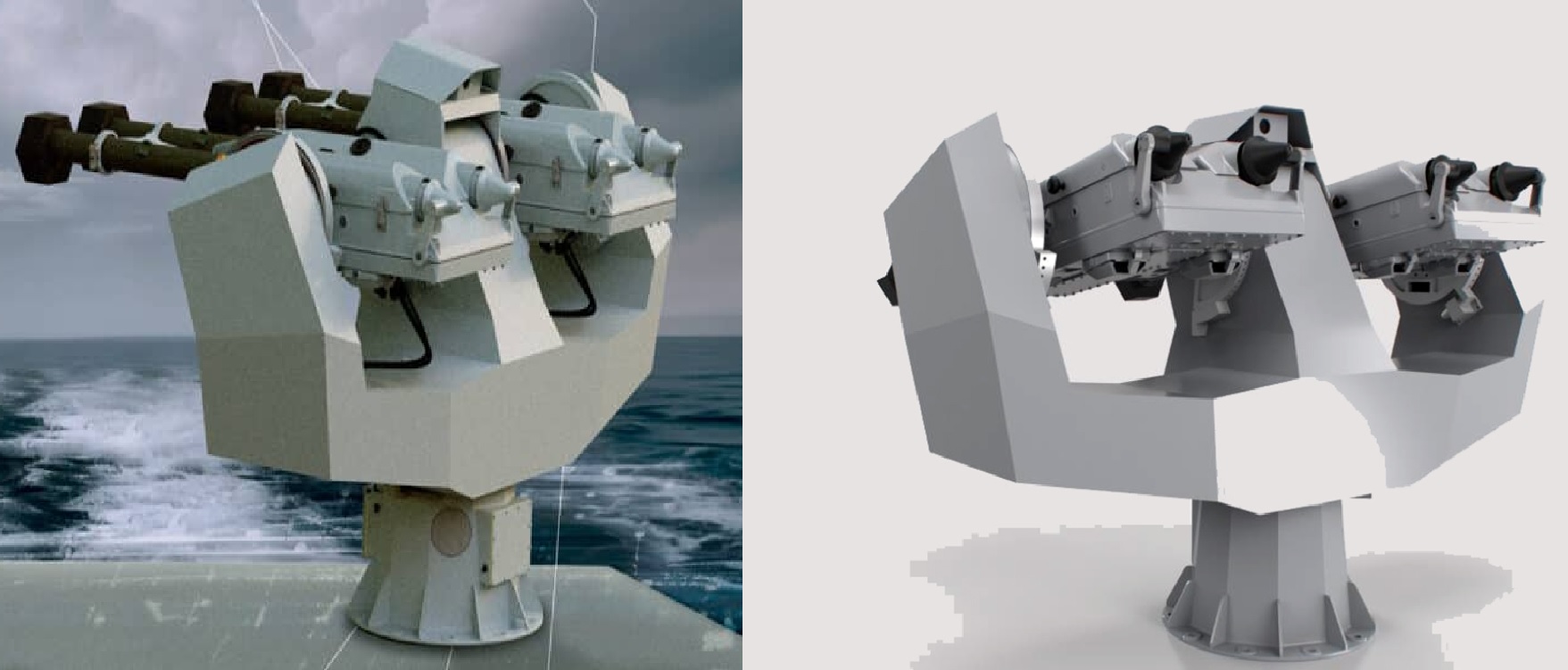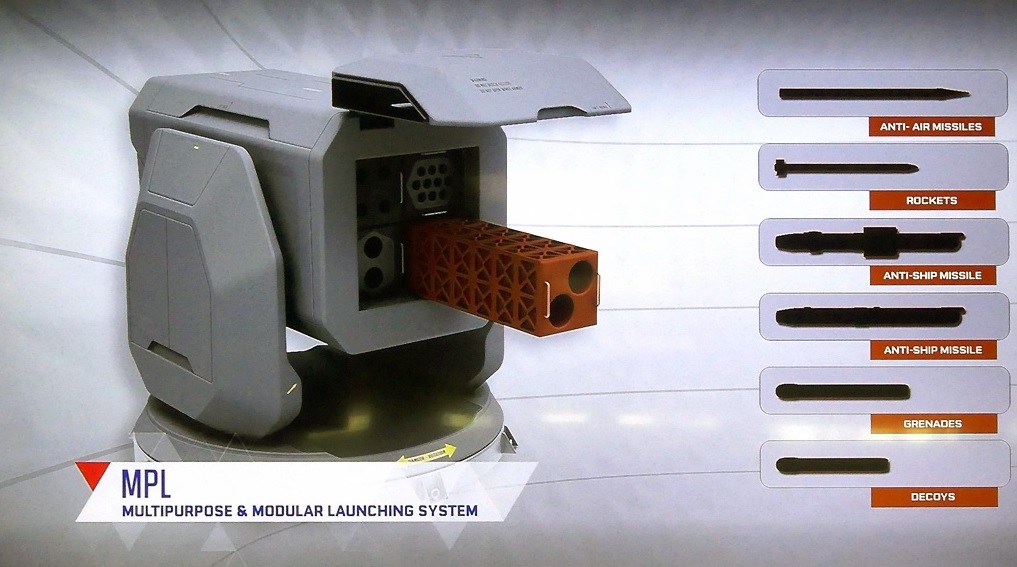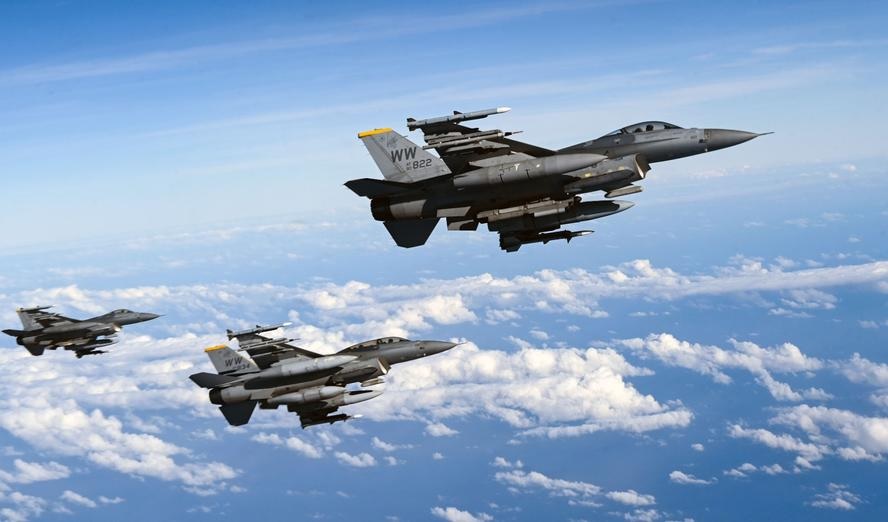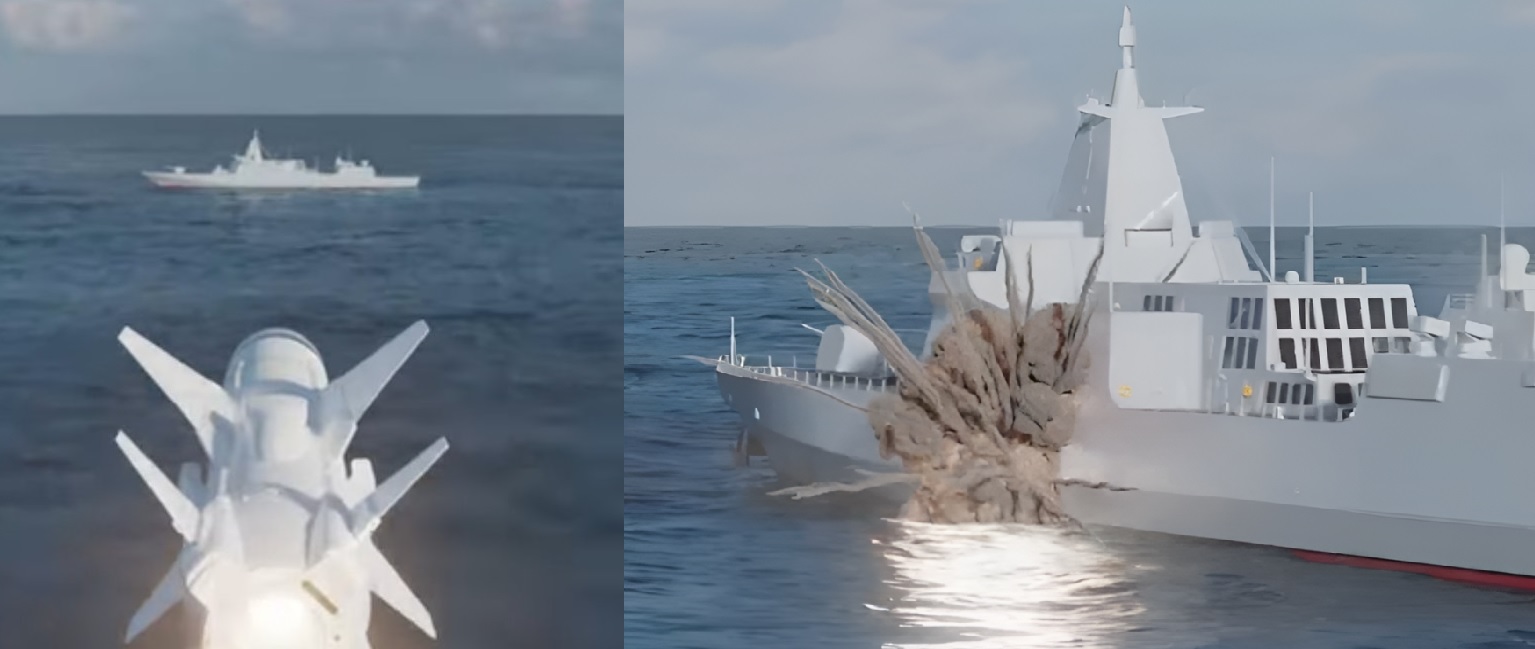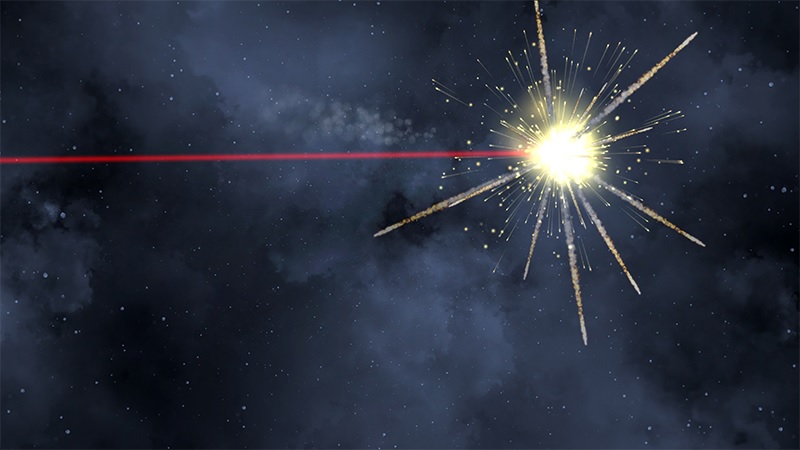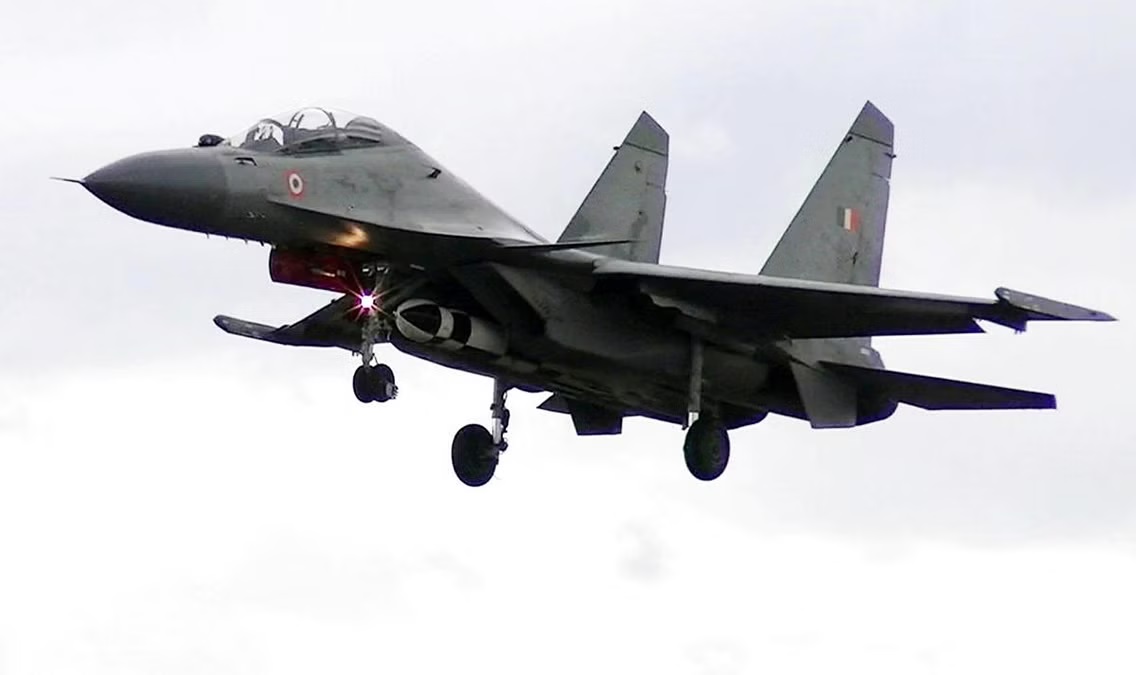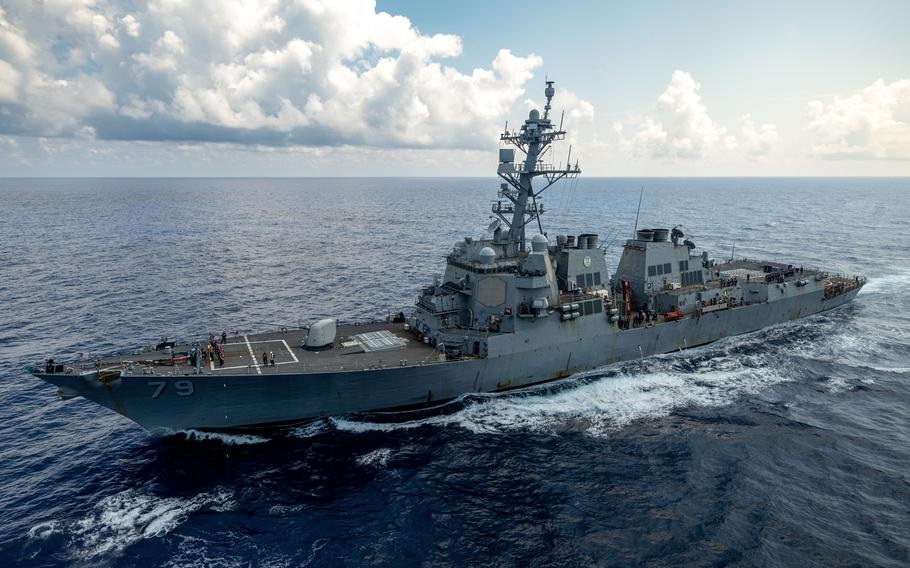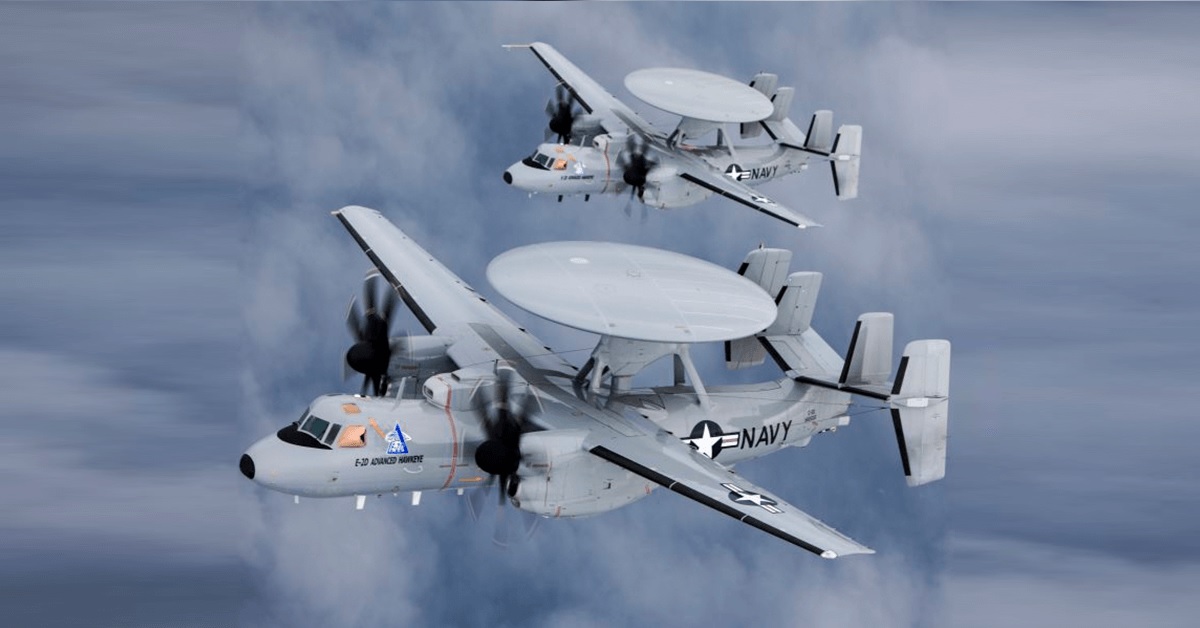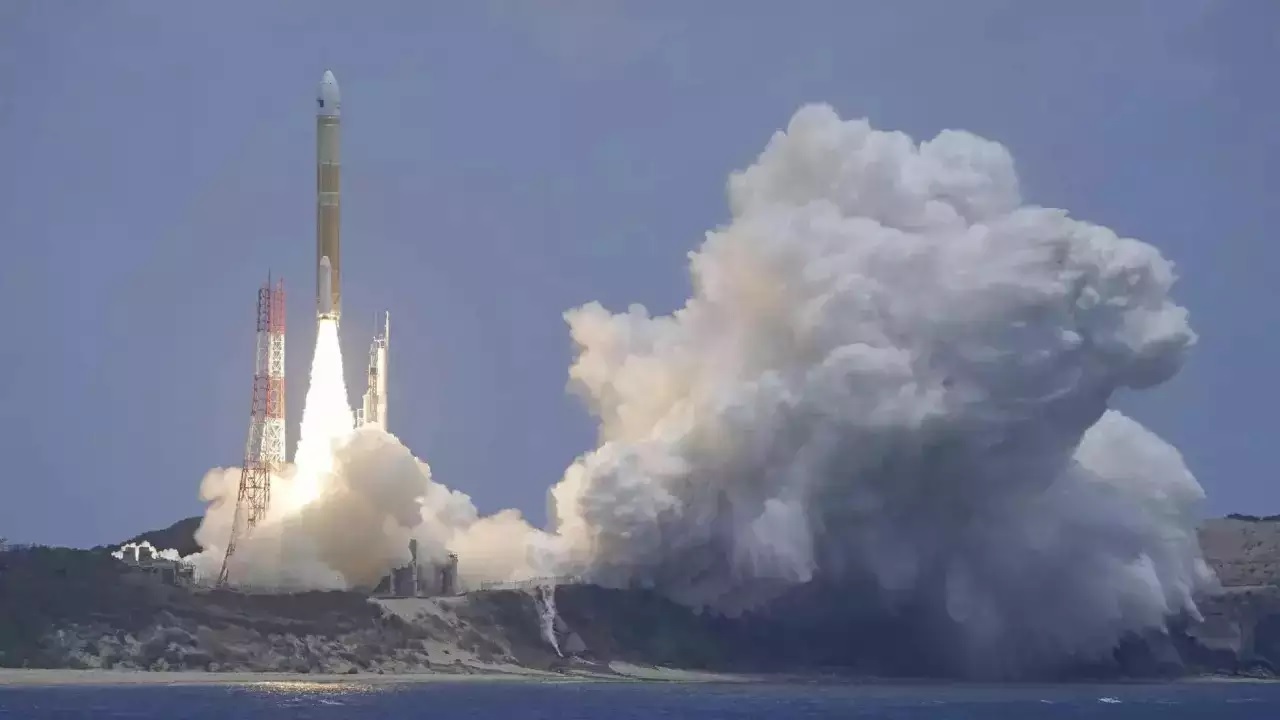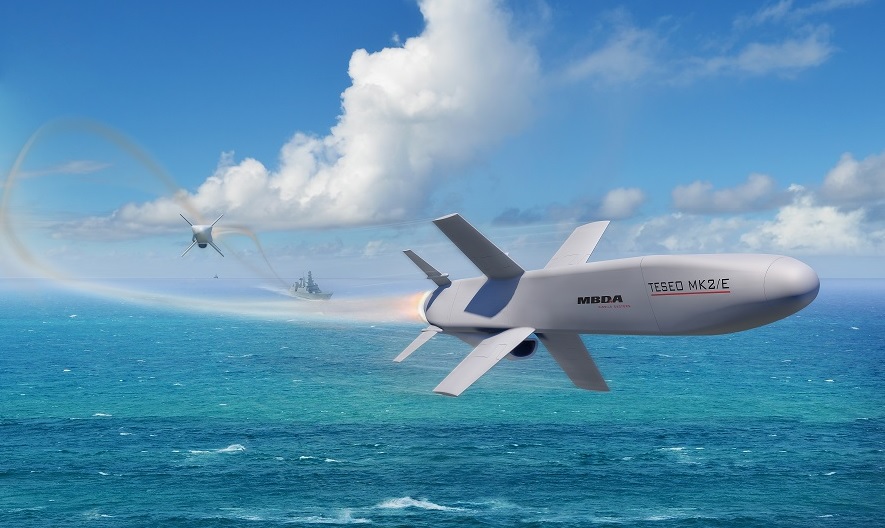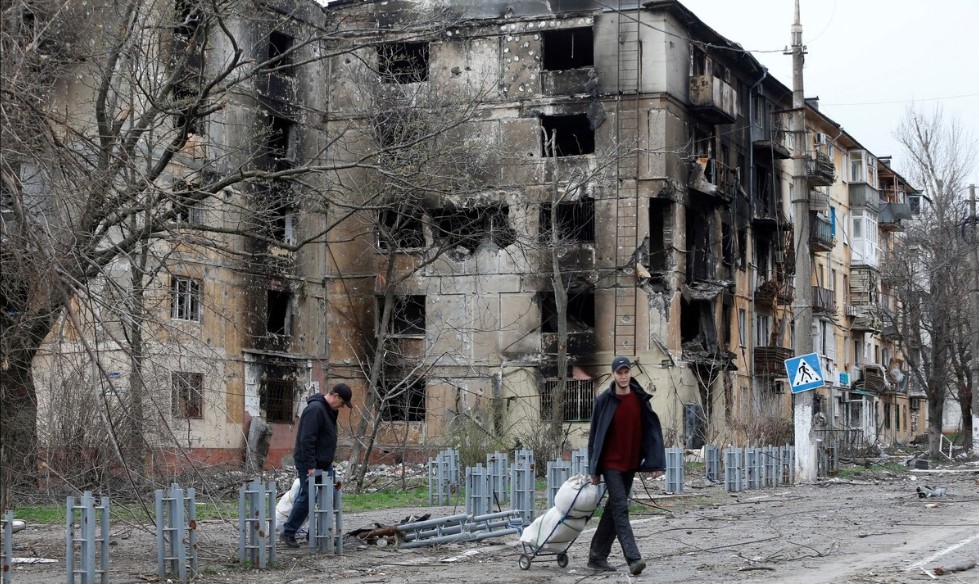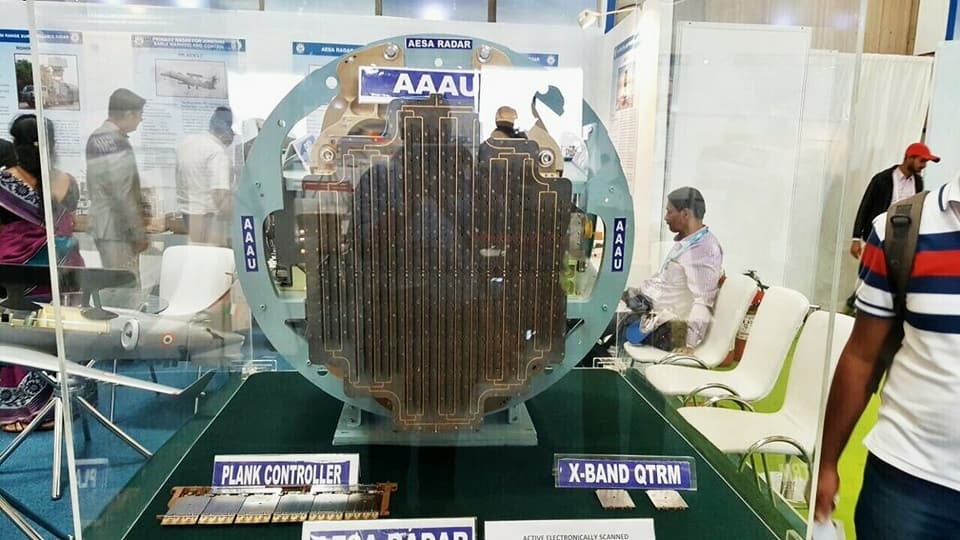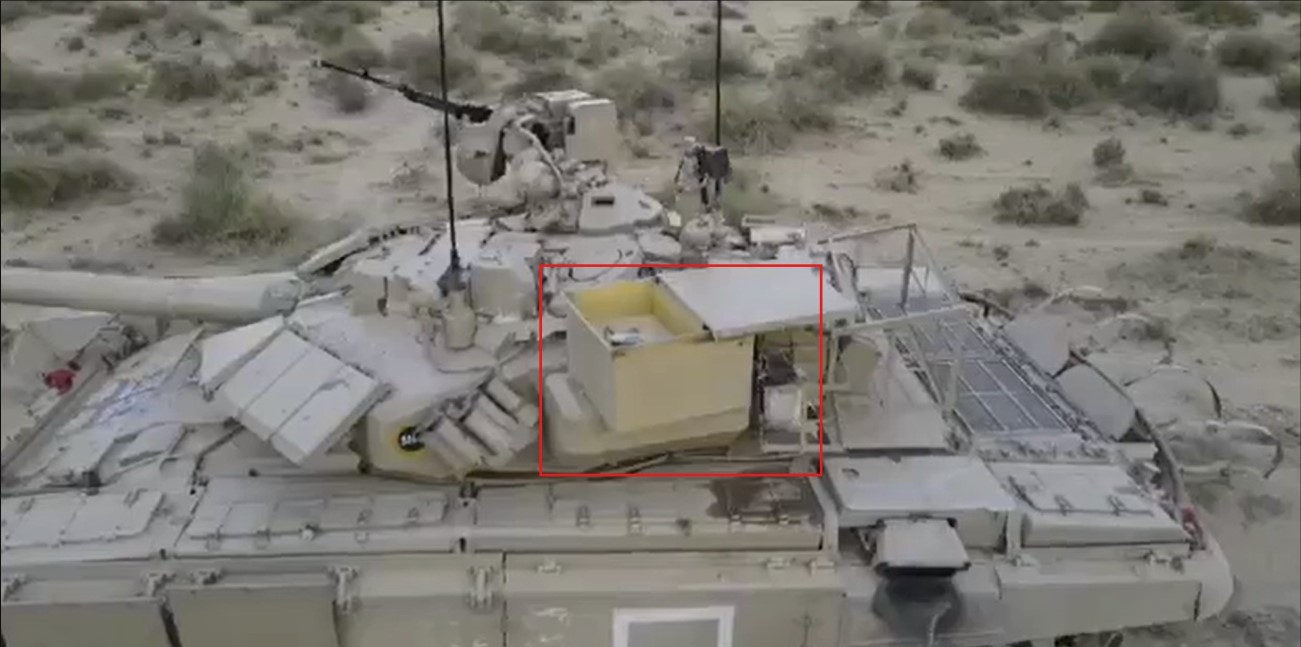India
In a notable achievement for India's defense sector, Morocco’s Royal Armed Forces (RMAF) recently chose the Indian-made Tata WhAP 8x8 armored fighting vehicle (AFV) over China’s Type-08, following rigorous performance trials across Moroccan landscapes. This victory speaks not only to India’s engineering capabilities but also to Tata Advanced Systems' innovation, which, in partnership with India’s Defense Research and Development Organisation (DRDO), brought this advanced vehicle to market. The WhAP, or Wheeled Armored Platform, is designed to handle a broad range of military applications, and its success in Morocco may signal a wider acceptance of Indian-made military vehicles across international defense markets.Why the WhAP Outperformed the Type-08At the heart of the WhAP’s success lies its high-performance 600-horsepower Cummins diesel engine and a rugged Allison 4500SP automatic transmission. This pairing of power and advanced mechanics proved crucial, enabling the WhAP to outperform the Chinese Type-08, which reportedly faced mechanical difficulties during the trials. The WhAP’s engine and transmission work in tandem to offer optimal control and flexibility in Morocco’s varying terrain, which ranges from steep mountainous regions to challenging arid landscapes. The trials lasted over four months, beginning in 2022, during which the vehicles were evaluated for performance, reliability, and versatility. According to reports, the Type-08’s limitations became evident when faced with Morocco’s challenging topography, while the WhAP handled these trials consistently, maintaining mobility and power through diverse and rugged conditions.A Closer Look at the WhAP’s SpecificationsThe WhAP isn’t just any armored vehicle; it’s designed for versatility and adaptability to different combat and tactical scenarios. Weighing approximately 24 tons, the WhAP boasts a modular design that allows it to be outfitted with various weapon systems based on mission requirements. For instance, the WhAP can be equipped with a 30mm cannon, a 105mm gun, anti-armor missiles, and even short-range air defense systems, making it adaptable to multiple combat situations. Its advanced armor provides protection against 14.5mm armor-piercing rounds, while a V-shaped hull enhances its mine protection capabilities by deflecting IED and mine blasts, a vital feature for defense personnel operating in high-risk zones.To provide strategic mobility, the WhAP is designed with an amphibious capability, allowing it to travel at a speed of 10 km/h in water and up to 100 km/h on roads, with an impressive range of 500 kilometers on-road and 250 kilometers off-road. These features allow for high maneuverability, ensuring it can handle both long-distance travel and urban combat requirements.Building a Local Defense Ecosystem in MoroccoMorocco’s selection of the WhAP extends beyond a simple acquisition. Morocco has partnered with Tata Advanced Systems to establish a production facility locally, creating a sustainable model for defense manufacturing within the country. This facility will initially aim to produce 150 vehicles, with a potential increase to 400 units. With an annual production capacity of around 100 vehicles, the factory is expected to contribute to Morocco’s defense industry self-reliance, creating jobs, boosting local industry, and positioning the country as a potential defense manufacturing hub within Africa.The plan includes a 50% domestic integration rate for the WhAP, meaning that half of the vehicle’s components and assembly work will be conducted locally. This not only reduces Morocco’s dependency on foreign suppliers but also encourages growth in its domestic defense manufacturing capabilities.Strengthening Indo-Moroccan Defense TiesThe deal represents a deepening defense partnership between India and Morocco, reflecting Tata’s expanded role in international defense collaborations. For Tata, this contract serves as a valuable entry point into the African defense market, while Morocco gains a customizable, scalable armored vehicle platform that enhances its military’s operational capabilities.In summary, the WhAP’s success in Morocco underscores the global competitiveness of India’s defense manufacturing and highlights the vehicle’s adaptability, power, and durability. As Morocco continues its military modernization, Tata’s WhAP stands as a symbol of Indian engineering and defense innovation—a product that may pave the way for further Indian presence in African and global defense markets.
Read More → Posted on 2024-11-05 14:15:33World
Russia recently reinforced its stance that Turkey cannot legally transfer its Russian-manufactured S-400 air defense systems to the United States. Russian Foreign Minister Sergey Lavrov addressed speculation at the United Nations General Assembly, emphasizing that the S-400 agreement between Moscow and Ankara, signed in 2017, included an end-user clause prohibiting the system’s sale or transfer to any third party without Russian consent. Lavrov’s statement underscored Moscow's strict adherence to the terms of this contract and its expectations that Turkey respects this limitation.Background on Turkey’s S-400 AcquisitionThe S-400 purchase by Turkey marked a significant pivot in its defense relationships, especially with NATO allies. The S-400 Triumf system, designed by Russia’s Almaz-Antey Corporation, is among the world’s most advanced air defense systems. It can engage up to 80 targets simultaneously and intercept ballistic and cruise missiles at ranges up to 400 km. The system’s acquisition by Turkey was controversial not only because of its capabilities but because it is incompatible with NATO defense protocols. In response, the US excluded Turkey from the F-35 stealth fighter jet program, one of NATO’s cornerstone defense initiatives. The US justified this by claiming the S-400 posed a risk of Russian intelligence being gathered on F-35 operations through close system proximity.The US Proposal and Turkey’s PositionReports emerged suggesting a potential resolution: senior US officials allegedly proposed that Turkey transfer its S-400 system to the United States or store it under American control at the Incirlik Air Base in southern Turkey. In exchange, the US would consider reinstating Turkey into the F-35 program. However, Turkey responded cautiously, neither dismissing the proposal outright nor showing enthusiasm. Sources cited by Greek media outlet Ekathimerini suggest Turkish officials rebuffed the idea of handing over the S-400 to the US. Instead, they reportedly offered to keep the system dormant, implying that Ankara isn’t yet willing to dismantle its strategic relationship with Moscow over the S-400.While Turkey has not definitively ruled out a potential arrangement with the US, its defense ministry stressed that Ankara's stance on maintaining an independent defense policy remains firm. Turkish sources reiterated the importance of removing restrictions between allies, alluding to NATO’s foundational principles of cooperation and mutual security.Russia’s End-User Certification ClauseLavrov highlighted that Russia’s contracts explicitly outline end-user agreements to prevent unauthorized transfers. This clause is integral to Russian arms deals, ensuring that the system remains within the purchasing country’s control. Should Turkey proceed with any unauthorized transfer, it risks damaging its defense relationship with Russia and potentially facing penalties or reduced access to Russian technology.The end-user clause is a standard feature in many high-value arms contracts worldwide, especially when involving sophisticated defense technologies like the S-400. Such contracts are crafted to ensure the original vendor’s interests are protected and to avoid the possibility of its sensitive technology falling into unintended hands. Lavrov’s comments serve as a reminder of the high-stakes nature of these agreements and the diplomatic tightrope Turkey must walk between two powerful allies.What’s at Stake for Turkey?For Turkey, the S-400 acquisition was not just about obtaining a capable defense system—it represented a strategic choice that diverged from its traditional NATO alignment. By purchasing from Russia, Turkey indicated its intent to pursue a more independent defense strategy. However, this decision has come with significant trade-offs, most notably the forfeiture of F-35 fighter jets, which would have given Turkey a technological edge in regional security.Turkey’s insistence on retaining the S-400 is as much about sovereign choice as it is about defense needs. By retaining the system, Ankara signals to its NATO allies that it is willing to break from consensus if it serves its national interests, especially if it perceives those interests as under-recognized within the alliance. Yet, Turkish officials remain interested in mending the rift with Washington, with reports indicating that discussions around the F-35 may surface again.Future ImplicationsThe ongoing S-400 dispute encapsulates a complex reality facing NATO: the challenge of maintaining unity when member states pursue divergent defense policies. The resolution of this impasse could set a precedent for how NATO allies navigate disagreements involving military procurement and sovereign decision-making.For now, the S-400 issue remains unresolved, with Turkey’s relationship with the United States and Russia both on uncertain ground. The high cost of exclusion from the F-35 program continues to weigh heavily on Turkey’s defense aspirations, but Russia’s insistence on upholding its end-user agreement leaves little room for maneuvering. In the coming months, the stakes for Turkey’s defense partnerships—and potentially NATO’s cohesion—will continue to mount as Ankara and Washington attempt to negotiate a compromise that aligns with their national interests and regional security strategies.
Read More → Posted on 2024-11-04 16:24:54World
MBDA Introduces the New SIMBAD-RC 2 and 4: Advanced Naval Defense for Modern ThreatsIn response to the rising challenges in naval defense—particularly the increased threat of low-cost, high-risk weapons like kamikaze drones and unmanned surface vehicles—MBDA has taken a significant leap forward with its latest updates to the SIMBAD-RC system. With new models offering two-missile and four-missile configurations, MBDA has refined this system for both advanced and asymmetrical threats, making it a powerful solution for naval forces across the globe. Set to be delivered starting in early 2026, these upgrades provide an essential boost to naval close-in defense, designed to protect critical assets at sea.The SIMBAD-RC has long been MBDA's cornerstone in short-range naval air defense. Lightweight, remotely operated, and packed with high-precision capabilities, it’s an ideal choice for a range of vessels—from patrol boats to logistics support ships. The system primarily serves as a last line of defense, using its Mistral 3 missiles to counter aerial and small surface threats, providing coverage up to 8 kilometers. The recently upgraded SIMBAD-RC 2 and SIMBAD-RC 4 versions expand this potential, with the addition of software enhancements and design modifications that improve both efficiency and responsiveness against new-generation threats.SIMBAD-RC 2 and RC 4: Enhanced Design and CapabilitiesThe SIMBAD-RC 2, as the name suggests, is equipped with a two-missile launching pod, while the SIMBAD-RC 4 boasts a four-missile configuration. This upgrade offers double the firepower without the need for a second turret, making the RC 4 version a valuable asset against saturation attacks, where multiple threats are launched simultaneously. The new design includes a consolidated turret by Cegelec Défense, integrating power supply and system components into a single unit—enhancing reliability and reducing space requirements. This unified structure also allows for greater flexibility in mounting the system, offering an operational weight of 500 kg for the RC 2 and 800 kg for the RC 4, both including missiles.The updated MATIS SP thermal camera is strategically positioned based on the configuration: mounted on the right arm in the RC 2 and centrally on the RC 4, allowing for optimized tracking and targeting. Both versions maintain the same angular range of ±160° in bearing and -30°/+55° in elevation, ensuring full coverage around the vessel.Mistral 3 Missile: Enhanced Software and Combat ReadinessCentral to the effectiveness of SIMBAD-RC is the Mistral 3 missile. MBDA has equipped the Mistral 3 with cutting-edge technology to handle a spectrum of threats from UAVs to anti-ship missiles. The Mistral 3 stands out due to its passive, fire-and-forget guidance, relying on an infrared imaging seeker developed by Safran. The missile's advanced image processing enables it to effectively engage low-signature targets, including small drones and fast-moving missiles, while remaining resilient against infrared countermeasures. With a range of up to 8 kilometers and an altitude ceiling of 6,000 meters, it operates across a broad defensive radius. Additionally, with an interception minimum range of 500 meters, it covers very close proximity threats—a crucial advantage in close-in defense scenarios.The Mistral 3's upgrades also include trajectory enhancements, allowing it to neutralize asymmetric threats with precision. The missile’s software has been optimized to recognize and respond to patterns exhibited by kamikaze drones, which are increasingly used in swarm attacks. The missile's guidance and propulsion systems allow it to perform with agility, maneuvering at up to 30 g, which is critical for countering high-speed, agile targets. MBDA has verified the Mistral 3’s effectiveness against some UAV models like the Shahed, further attesting to its utility in modern conflict zones.Global Interest and Strategic DeploymentsMBDA’s SIMBAD-RC system has proven popular, with over 50 units delivered to 10 countries. Notable users include naval forces from France, Indonesia, Turkmenistan, Saudi Arabia, and the Philippines. The French Navy plans to integrate the system into its BRF (Bâtiment de Ravitaillement de Force) ships, using a two-turret setup to maximize defensive capability. Several other countries, including Angola, are also in the process of adopting these new configurations, with MBDA actively engaging potential customers worldwide.Future Prospects and Naval RelevanceThe SIMBAD-RC 2 and 4 reflect MBDA’s commitment to providing flexible, high-performing defense systems tailored to the realities of modern naval warfare. These upgrades signify an adaptive approach to emerging threats, allowing naval forces to counter cost-effective but potentially devastating technologies like kamikaze drones. With its robust design, modularity, and software improvements, the SIMBAD-RC is well-positioned to remain a vital element of naval defense strategies for years to come.
Read More → Posted on 2024-11-04 16:21:23World
At Euronaval 2024, Naval Group presented its innovative Multi-Purpose Modular Launcher System (MPLS), a groundbreaking solution designed to meet the evolving challenges of modern naval warfare. The MPLS reflects a shift from traditional weapon launchers, which have historically been dedicated to single-purpose munitions, to a versatile system capable of deploying various weapon types. This innovation, Naval Group believes, aligns with the need for adaptable defense mechanisms in a world facing diverse and asymmetrical threats.The MPLS isn’t just a new launcher; it’s a multipurpose, highly modular platform that can handle multiple weapon types, including missiles, rockets, grenades, underwater munitions, decoys, drones, and loitering munitions. This versatility is enabled by its interchangeable munitions modules, allowing operators to swiftly reconfigure the system for different mission requirements without returning to port. With an unprecedented payload capacity of 1,000 kg and compact integration of a firing computer and fire control system within the launcher, the MPLS promises a broad operational reach with seamless onboard integration.Structurally, the MPLS incorporates a two-axis trainable turret that can target moving threats, providing both stability and precision. The turret is designed with a total loaded mass of less than 3.5 tonnes, making it relatively lightweight for easy integration into various ship classes. The MPLS can operate autonomously or be networked into a ship’s combat system, allowing flexibility in deployment and mission adaptability. Its modular nature ensures that a single vessel can host multiple MPLS units, each loaded with different weapon configurations depending on operational demands.This system’s modularity also addresses a crucial aspect of naval requirements: rapid adaptability to new threat landscapes. By allowing for incremental upgrades, the MPLS can be updated with emerging technologies and new munitions, all while controlling costs and minimizing operational downtime. Naval Group has emphasized that this system is designed to meet modern navy needs efficiently, reducing costs for integration and maintenance compared to traditional launch systems.The MPLS has already passed initial testing stages, demonstrating its capacity by conducting live firing trials with Thales rockets in the UK. This test showcased the MPLS's ability to manage diverse payloads and its suitability for multi-threat environments. Naval Group anticipates that the system’s first operational capabilities will be available between 2026 and 2027, a timeline that reflects the project’s rapid development and Naval Group’s confidence in its design.With the MPLS, Naval Group offers a forward-thinking solution that departs from conventional naval launchers, accommodating an impressive array of munitions and making it easier for navies to upgrade their capabilities as new technologies emerge. This adaptability and its emphasis on cost-efficiency and ease of integration mark the MPLS as a pivotal advancement in naval warfare, offering future navies the means to respond swiftly and proportionally to diverse and evolving threats.
Read More → Posted on 2024-11-04 16:15:39World
In a significant move to bolster Argentina's defense capabilities, the U.S. State Department has approved the sale of 34 F-16 fighter jets and a range of advanced military equipment, amounting to a total value of $941 million. This deal reflects the strengthening of military ties between the two nations and emphasizes the U.S. commitment to supporting its allies in South America.The aircraft included in the sale are renowned for their versatility and advanced technology, capable of executing a variety of missions, from air defense to ground support operations. The package will not only provide Argentina with state-of-the-art fighter jets but will also enhance its military arsenal through the inclusion of Advanced Medium Range Air-to-Air Missiles (AMRAAMs), general-purpose bombs, and components for laser-guided weapons. Additionally, the sale encompasses fuze systems, further augmenting Argentina's operational capabilities.The Defense Security Cooperation Agency (DSCA) has noted that this acquisition is crucial for Argentina, enabling the country to better address both current and future threats. The enhanced air capabilities are expected to significantly improve Argentina's ability to conduct air defense, engage in offensive counter-air operations, and provide close air support for ground forces. This upgrade is vital as Argentina seeks to modernize its military and ensure that it can effectively respond to evolving security challenges in the region.Lockheed Martin, the prime contractor for this sale, will oversee the delivery and support of the F-16 aircraft. However, the deal is still pending Congressional approval, which is a standard procedure for foreign military sales. The relationship between Argentina and the U.S. has grown stronger, with Argentina being designated as a "Major Non-NATO Ally." This status recognizes Argentina's importance as a stable partner in South America, contributing to both regional security and political stability.In April, the U.S. also announced an allocation of $40 million in foreign military financing to enhance Buenos Aires' defense capabilities, which includes support for the F-16 purchase. This marks a notable change in U.S. policy towards Argentina, as it is the first instance in two decades that the country has received such financial assistance from Washington. This investment in Argentina’s military not only aims to strengthen the bilateral relationship but also to align with U.S. foreign policy goals in the region.The approval of this sale represents a pivotal step in modernizing Argentina's air force and improving its defense infrastructure. As global security dynamics evolve, the U.S. remains committed to supporting its allies, ensuring that they are well-equipped to face various threats and challenges. This partnership could enhance military cooperation between the two nations, further solidifying Argentina’s role as a key player in South American security affairs.
Read More → Posted on 2024-11-04 16:12:12World
In the latest twist in the ongoing aerial battles between Ukraine and Russia, reports have emerged indicating that a Russian Su-34 fighter-bomber was shot down by a Ukrainian F-16 in a mysterious incident early this morning. This marks a significant development, as it is the second confirmed loss of a Russian Su-34 in just a few weeks, following another shootdown attributed to a Ukrainian F-16 on October 12.Russian military bloggers and aviation enthusiasts have been quick to react to the news, with some acknowledging the loss through somber tributes. Ilya Tumanov, a noted figure within the Russian Air Force community, expressed his condolences with phrases such as “Eternal memory, brothers!” suggesting that the crew aboard the downed aircraft did not survive the encounter. This emotional response underscores the gravity of the incident, as the Su-34 is a critical asset in Russia's military operations.The Su-34, known for its capabilities as a fighter-bomber, is designed for both ground attack and air-to-air combat. With a length of 22.3 meters and a wingspan of 14.4 meters, it boasts a maximum takeoff weight of about 45,000 kilograms. Equipped with advanced avionics, including a digital fly-by-wire system and a phased array radar, the Su-34 can carry a diverse payload of precision-guided munitions. Its twin-engine configuration allows for impressive performance in various combat scenarios.Despite the significance of the aircraft involved, official statements from both the Ukrainian and Russian governments have been notably absent. This lack of confirmation leaves room for speculation and analysis. Experts suggest that the silence may indicate a reluctance to acknowledge the loss of such advanced military hardware, particularly given the ongoing conflict's escalating nature. The incidents may reflect a changing dynamic in the airspace above Ukraine, with Ukrainian fighter jets appearing to assert their presence more confidently.In the wake of this recent downing, discussions around the increasing effectiveness of the Ukrainian air force are becoming more prevalent. Analysts have noted a pattern of escalating confrontations, with Ukraine's Western-supplied F-16s likely playing a crucial role in these air engagements. As the conflict drags on, both sides are adapting their tactics and strategies, highlighting the evolving landscape of aerial warfare in the region.This latest incident not only highlights the dangers faced by military aviators in the conflict but also adds to a series of setbacks for Russia’s air force, which has seen an increase in the number of aircraft losses and crew casualties in recent months. As the situation continues to develop, both military analysts and enthusiasts will be closely monitoring the implications of these engagements on the broader conflict between Ukraine and Russia.
Read More → Posted on 2024-11-04 16:10:03World
In an impressive display of naval firepower, MBDA, the leading Pan-European missile manufacturer, has introduced a new submarine-launched variant of its renowned Exocet anti-ship missile, the Exocet SM40. This advanced missile aims to bolster the capabilities of modern submarines, allowing them to engage formidable targets with precision and effectiveness.The promotional video released by MBDA features the Exocet SM40 striking a Type 055 destroyer, a stealthy addition to the Chinese naval fleet known as the Renhai-class cruiser in NATO terminology. This striking imagery not only showcases the missile's capabilities but also highlights the increasing focus on countering emerging naval threats from nations like China.The Exocet SM40 builds upon its predecessor, the Exocet SM39, and incorporates two major enhancements that significantly improve its performance in modern warfare scenarios. Notably, it integrates advanced technologies derived from the Exocet MM40 B3c, such as a sophisticated coherent J-band RF seeker and updated missile algorithms. These innovations enable the missile to function effectively in high-intensity electronic warfare environments, a critical factor in today’s complex maritime battlespace.One of the key strengths of the Exocet SM40 lies in its enhanced target discrimination and identification capabilities. It can accurately engage targets even amidst heavy electronic interference, a feature that is essential as naval operations increasingly involve sophisticated countermeasures and detection systems. Moreover, the missile retains the operational flexibility to be launched from extreme depths or in shallow waters, a necessity given the current threats to submarines posed by advanced surface ship detection technologies.MBDA emphasizes that the Exocet SM40 positions the company as Europe’s leading provider of advanced naval strike capabilities. Their commitment to maintaining a unique sovereign capability for submarine-launched missiles ensures that they remain the sole European player in this domain, offering solutions that have no direct equivalents on the market.By showcasing a Chinese Type 055 destroyer in its promotional material, MBDA not only highlights the missile's advanced capabilities but also acknowledges the evolving landscape of naval warfare, where the potential for confrontations with sophisticated adversaries is ever-present. As the global naval arms race continues to intensify, the Exocet SM40 represents a significant advancement in submarine-launched anti-ship missile technology, reaffirming MBDA’s position at the forefront of military innovation.This new missile promises to enhance the strategic options available to navies worldwide, allowing them to respond effectively to emerging threats while maintaining a decisive edge in naval operations.
Read More → Posted on 2024-11-04 16:06:07World
In a groundbreaking advancement, Chinese scientists have successfully developed a new type of high-power microwave weapon that combines electromagnetic waves with ultra-precise timing technology. This innovative system is designed to focus and amplify power output to effectively target and disable a single object, marking a significant milestone in military technology.The core of this weapon system involves multiple microwave-transmitting vehicles strategically deployed across various locations. These vehicles emit microwaves that can converge into a singular, powerful energy beam, aimed at a specific target. This concept draws a fascinating parallel to the fictional Death Star from the Star Wars universe, which famously combined multiple laser rays into one destructive beam. Achieving such a feat has long been deemed challenging due to the necessity for precise timing and positioning of electromagnetic waves from different platforms, which must arrive at the same spot simultaneously and in the same form to be effective.According to the research team, achieving this convergence requires remarkable precision. Each microwave vehicle must be positioned with an error margin of mere millimeters, while the time synchronization between them cannot exceed 170 picoseconds (trillionths of a second), surpassing the accuracy of atomic clocks used in GPS satellites. Overcoming these challenges, scientists and engineers have successfully constructed a system in western China consisting of seven transmitting vehicles. Experimental trials have shown that this advanced weapon can effectively jam signals from American GPS and other satellites, fulfilling multiple objectives, including military training, technology verification, and tactical exercises.The synchronization of the timing devices on the transmitting platforms is achieved using optical fibers, enabling ultra-high precision. In fact, Chinese researchers recently set a world record by achieving time synchronization accuracy of just 10 picoseconds over a distance of 1,800 kilometers (about 1,100 miles) using optical fiber technology.Despite the sensitive nature of military projects, some details of this technology reveal China’s advancements in mobile timing devices. Notably, the atomic clock on China’s space station currently stands as the most precise timekeeping device in space. Additionally, China’s BeiDou satellite navigation system has improved its capabilities, now offering centimeter-level positioning accuracy, which is notably better than GPS. However, for the converged microwave weapon to function effectively, this level of precision is still inadequate. To address this, researchers have integrated laser ranging devices on each vehicle to ensure millimeter-level positioning accuracy.A mobile command center analyzes data from the various platforms to coordinate the attack commands. This innovative method of power combination allows for a cumulative effect—achieving a power output that is greater than the sum of its parts, described as “1+1>2” by the project's scientists.The research and development of this technology were led by the Xian Navigation Technology Research Institute, a key supplier of electronic warfare weapons for the People’s Liberation Army. Unlike most existing military energy weapons that operate independently and have limited power output, this new distributed structure potentially allows for an exponential increase in attack beam power. Previous research estimates suggest that if the power of a directed energy weapon reaches one gigawatt, it could inflict significant damage to satellites in low Earth orbit.As this technology progresses, it not only signifies China’s advancements in military capabilities but also raises important discussions about the implications of such powerful weapons in modern warfare. With the ability to jam satellite signals and target effectively, the development of this converged energy beam weapon underscores the ongoing arms race in advanced military technologies and the need for strategic considerations in global defense policies.
Read More → Posted on 2024-11-04 16:02:17World
Rolls-Royce has recently announced groundbreaking innovations designed to assist navies in enhancing their undersea capabilities. With the demands of modern naval warfare evolving rapidly, the company is introducing advanced mtu power solutions and automation systems tailored specifically for the next generation of submarines.At the heart of these innovations is a more powerful mtu submarine charging unit, essential for addressing the increasing electrical demands of contemporary underwater vessels. Unlike older submarine models, which relied on simpler electrical systems, today’s submarines are equipped with sophisticated electronic systems and advanced battery technologies. These advancements necessitate faster and more efficient charging solutions. Rolls-Royce is responding with a high-capacity onboard power generator that leverages a next-generation 20-cylinder mtu Series 4000 engine. This new engine, which builds upon the established 12-cylinder model, significantly boosts power output, facilitating quicker battery charging and reducing the time submarines spend on the surface. The compact design of the 20-cylinder engine allows for a more efficient layout, potentially replacing three smaller generator sets with just two larger units. This design optimization not only saves valuable space aboard the submarine but also includes modified charge air and combustion systems that contribute to stealth. By minimizing the submarine's acoustic and thermal signatures, these enhancements provide a strategic edge in underwater operations.Rolls-Royce has conducted extensive studies demonstrating the effective integration of this advanced charging unit into modern submarine architectures. This capability positions the company as a frontrunner in responding to the evolving needs of naval engineering, offering versatile and high-performing power solutions that are vital for today’s naval fleets.In addition to power generation, Rolls-Royce is also enhancing underwater vessel management through its mtu NautIQ Master automation system. This advanced system enables comprehensive control and monitoring of submarines, managing propulsion and power supply while constantly assessing unit conditions. The NautIQ Master system can be customized with additional modules focused on damage control, training, and communication, all accessible via a standardized interface.The transition of the mtu NautIQ Master system from surface vessels to submarines marks a significant shift for Rolls-Royce. By expanding its offerings beyond components to full-fledged integrated solutions, the company is solidifying its position in the submarine market. This evolution not only meets current operational needs but also anticipates future requirements, ensuring that naval forces are well-equipped to face the challenges of undersea defense.With these advancements, Rolls-Royce is poised to lead the charge in the submarine industry, providing cutting-edge power and automation solutions that enhance the capabilities and operational readiness of naval fleets around the world.
Read More → Posted on 2024-11-04 15:59:31World
The Indian Air Force (IAF) is gearing up for a major modernization of its fleet of Sukhoi-30MKI fighter jets, placing a strong emphasis on Artificial Intelligence (AI) integration. This upgrade aims to transform the capabilities of these jets, ensuring that they remain powerful tools in India’s defense strategy well into the coming decades. Partnering with IIT Mumbai, the IAF has launched pilot projects that focus on incorporating AI solutions for more efficient engine maintenance, optimized asset management, and streamlined inventory processes.AI in the Cockpit and BeyondOne of the focal points of the upgrade is harnessing AI to predict and optimize maintenance needs, streamlining everything from engine upkeep to parts replacement. Advanced AI algorithms are being developed to “digitally fingerprint” critical components, which enables the precise tracking of wear and performance. This approach reduces redundancy, minimizes parts wastage, and ensures components are available when needed, making for a more efficient and cost-effective maintenance cycle.Key Technological EnhancementsThe ambitious plan also includes the integration of state-of-the-art systems, many of which are locally developed, aligning with India's 'Make in India' initiative. Here’s a closer look at some of the key upgrades:Virupaksha AESA Radar System: One of the most anticipated additions to the Su-30MKI is the Virupaksha Active Electronically Scanned Array (AESA) radar. This advanced radar system significantly improves the aircraft’s detection capabilities, giving pilots the ability to identify and engage targets at greater distances. With the enhanced radar, the jets will be more effective when paired with long-range air-to-air missiles such as the Astra series, improving their combat capabilities across varied missions.Software-Defined Radio (SDR) for Communication: Communication is a crucial factor in modern aerial warfare, and the upgraded Su-30MKIs will feature SDRs to allow for more secure, interference-resistant communication. These systems are designed to support dynamic electronic warfare tactics, ensuring that pilots stay connected and are able to coordinate effectively even in the face of hostile electronic interference.Enhanced Avionics and Autonomous Drone Compatibility: The upgraded jets will incorporate sophisticated avionics that will allow them to operate in coordination with autonomous drones. This integration will facilitate data sharing, collaborative targeting, and coordinated operations, effectively multiplying mission effectiveness by pairing manned aircraft with unmanned systems. This is a forward-looking move, as drone technology becomes increasingly central to modern air combat.Project Scale, Timeline, and ExecutionThe scope of the upgrade project is extensive, with a total estimated cost of ₹63,000 crore ($7.7 billion). IAF’s target is to modernize 84 Su-30MKI jets by enhancing or replacing 51 different systems on each aircraft, aiming for 78% indigenous content. This initiative is expected to commence in early 2025, with the government’s final approval pending. Hindustan Aeronautics Limited (HAL) will lead the upgrade, working closely with private sector firms and the Defence Research and Development Organisation (DRDO) to bring each enhancement to life.To maintain operational readiness throughout the transition, the upgrades will be performed in phases, with the entire process projected to take about five to seven years. Each batch of jets will be upgraded sequentially, ensuring that a portion of the fleet remains mission-ready while the rest undergoes modification. This phased approach ensures that IAF's defense capabilities remain uncompromised during the transition period.Strategic Vision for the FutureBy upgrading the Su-30MKI, the IAF is taking a proactive step toward modernizing its aerial assets to meet evolving threats. The integration of AI-driven predictive maintenance systems and advanced radar and communication technologies will elevate these jets' capabilities, extending their service life to at least 2055. More than a technological advancement, this modernization is also a strategic decision to keep pace with global advancements in air combat and autonomous systems.As India continues to bolster its defenses, this upgrade stands out as a landmark project that reinforces the Su-30MKI’s role as a central pillar of India’s air power well into the future.
Read More → Posted on 2024-11-04 15:54:42World
The United States Navy recently announced it would be extending the service life of 12 Arleigh Burke-class (DDG 51) guided-missile destroyers, a move that will keep these pivotal vessels in action well past their initial 35-year design lifespan. This extension applies to the "Flight I" ships, which were commissioned between 1991 and 1997. The Navy’s decision underscores the importance of maintaining a strong and technologically up-to-date fleet while newer vessels are being constructed.Why the Extension?These destroyers have proven themselves as resilient, versatile assets in naval operations worldwide, with capabilities ranging from anti-air and missile defense to anti-submarine warfare. However, the destroyers’ original systems, especially those in the Flight I series, are beginning to show their age, given the advancements in naval technology over the past three decades. The Navy’s announcement to extend the lifespan of these vessels comes after a careful evaluation of each ship’s material condition, combat readiness, and the feasibility of technical upgrades to keep them operational. This thorough review process included a hull-by-hull assessment, considering everything from structural integrity to advanced combat systems and overall lifecycle maintenance needs.With this program, the Navy aims to ensure these ships can effectively project power globally, particularly in critical regions like the Indo-Pacific and the Red Sea, where they have consistently operated as a frontline deterrent.Upgrades and Enhancements for Flight I DestroyersThe focus for these life extensions will include substantial updates to the destroyers' combat systems, navigation technology, and defensive capabilities. Many of the Flight I destroyers still operate with older radar, sonar, and missile systems, which are expected to be replaced or enhanced as part of this upgrade. Anti-submarine warfare (ASW) components, such as the AN/SQQ-89(V) system, which provides robust underwater detection, will likely be modernized to maintain the destroyers' competitive edge. Other expected upgrades include improvements to the Aegis Combat System, the destroyers’ central defensive feature, enabling them to track and engage increasingly advanced air and missile threats.In 2023, BAE Systems was awarded a $107.7 million contract to extend the service life of the USS Ross (DDG 71), a Flight I Arleigh Burke-class destroyer. This agreement included essential maintenance and structural upgrades to extend the destroyer’s operational capacity by an additional 10 years. BAE Systems is anticipated to be heavily involved in the upgrades of other Flight I ships, as they possess the specialized shipbuilding expertise required for these complex overhauls.A Strategic Advantage in a Budget-Constrained EnvironmentThe Navy’s approach to extending the Arleigh Burke-class service life reflects its response to a constrained budget environment. Vice Admiral Lisa Franchetti emphasized the Navy's focus on maintaining a strong "Battle Force Inventory" that can support America’s global interests in times of peace and conflict alike. By investing in the upgrades of proven, reliable vessels, the Navy avoids the higher costs associated with constructing new ships from scratch, while still bolstering its fleet capabilities.In light of limited resources, the Navy is prioritizing its spending to ensure that these destroyers, which are known for their durability and advanced combat capabilities, remain “ready players on the field.” With planned upgrades and a prolonged operational timeline, these vessels will continue to contribute to the Navy’s global mission from 2028 to 2035, bridging the gap as the Navy brings newer ships into active service.Importance of Arleigh Burke-Class Destroyers in Modern Naval StrategyThe Arleigh Burke-class destroyers are a cornerstone of the U.S. Navy’s strategy, thanks to their versatility and resilience in varied combat scenarios. These destroyers are equipped with the Aegis Ballistic Missile Defense system, which allows them to detect, track, and intercept ballistic missiles. This capability has proven particularly valuable in contested regions, such as the South China Sea, where maritime security and missile defense are crucial.In recent years, these destroyers have been involved in several high-profile operations, from intercepting missile and drone attacks in the Red Sea to providing air and missile defense for allies and partners. Extending the service life of the Flight I destroyers keeps these vital assets in the fleet and allows the Navy to deploy them in areas where a strong, reliable naval presence is essential to deter aggression and ensure regional stability.Moving ForwardThe U.S. Navy’s decision to extend the Arleigh Burke-class destroyers’ service life is a testament to the vessels' continued strategic value. Secretary of the Navy Carlos Del Toro remarked that extending these “highly-capable, well-maintained destroyers” aligns with the Navy’s mission to project power globally and defend its allies. The modernization of these destroyers will also enhance their readiness for contemporary threats, providing a vital boost to the fleet’s overall combat capability.As the Navy continues to invest in its existing assets and bring newer warships into the fleet, the Arleigh Burke-class destroyers will remain a formidable and integral component of the U.S. naval strategy for years to come.
Read More → Posted on 2024-11-04 15:50:54World
Northrop Grumman is ramping up its strategic collaborations with Poland, proposing to supply the nation with its highly regarded E-2D Advanced Hawkeye aircraft. This modern command and control aircraft, widely recognized for its unmatched capabilities in situational awareness and battle management, has proven indispensable in both naval and aerial operations worldwide. Now, Northrop Grumman is offering the E-2D Advanced Hawkeye to Poland with the goal of strengthening the country’s air and defense systems.The announcement comes as Northrop Grumman signs Memorandums of Understanding (MOUs) with Exence, a prominent Polish technology provider, and the Polish Air Force Institute of Technology (ITWL). Together, these partnerships are positioned to advance Poland’s command and control network, improve airspace security, and boost NATO interoperability across Europe.The E-2D Advanced Hawkeye’s Role in Modern DefenseAs a powerful airborne early warning (AEW) and control aircraft, the E-2D Advanced Hawkeye is known for its sophisticated radar and sensor systems, which provide extensive real-time data crucial for military and defense operations. First introduced over six decades ago, the E-2 platform has evolved significantly, with the E-2D model offering high-performance radar systems capable of detecting air and sea threats far beyond visual range. Its onboard technology, including the Lockheed Martin AN/APY-9 radar, allows it to detect a wide range of targets, track multiple threats simultaneously, and provide critical intelligence to command units on land, sea, and in the air.Janice Zilch, Vice President of Multi-Domain Command and Control Programs at Northrop Grumman, explained the importance of this collaboration, stating, “Our partnerships will establish a strong allied force of capabilities aligning to Poland’s defense requirements, developing Poland’s future airborne command and control capabilities. Northrop Grumman is committed to our partnerships in Poland that are enhancing the private and national industrial base while also helping build Poland’s national security.”Polish Collaboration: Building a Local Defense FoundationNorthrop Grumman’s partnership with Exence and ITWL is particularly meaningful for Poland. Exence, a technology firm based in Kobierzyce, has a strong background in secure communication solutions and predictive maintenance, along with AI technologies essential for defense infrastructure. Exence has already been involved in various NATO programs and is experienced in creating secure, interoperable solutions that are vital for modern military needs.The Polish Air Force Institute of Technology (ITWL), known as Instytut Techniczny Wojsk Lotniczych in Polish, has been a cornerstone of Poland’s aviation and defense research since 1953. Operating under the Ministry of National Defence, ITWL has consistently delivered cost-effective and advanced solutions in aviation and defense, making it a key partner in the E-2D Advanced Hawkeye’s integration into Poland’s defense structure. The institute’s established reputation, both locally and internationally, reinforces Poland’s engineering contributions on a global scale.Key Specifications of the E-2D Advanced HawkeyeDesigned for diverse environments, the E-2D Advanced Hawkeye boasts a variety of advanced features. It carries the following capabilities and technology to support Poland’s defense network:Radar and Sensor System: The AN/APY-9 radar provides 360-degree surveillance, enabling the E-2D to identify and track moving targets across great distances, including land, sea, and air.Advanced Data Link Systems: Equipped with Cooperative Engagement Capability (CEC), the E-2D Advanced Hawkeye allows operators to share and relay data with other assets, enhancing situational awareness for NATO-aligned forces.Extended Mission Range and Durability: With added aerial refueling capability, the E-2D can conduct extended missions, making it particularly suited for extended European defense operations.Battle Management System: The onboard system enables the crew to manage multiple, simultaneous engagements by guiding interceptors and coordinating missile defense with precision.These features make the E-2D Advanced Hawkeye a cornerstone in the current landscape of airborne command and control systems, adding an unmatched layer of resilience to Poland’s security network.Supporting NATO Goals and Enhancing Local Defense IndustryFor Poland, the introduction of the E-2D Advanced Hawkeye aligns with broader goals of integrating with NATO’s defense infrastructure. This interoperability will allow Polish forces to communicate seamlessly with other NATO allies, adding a robust layer of preparedness and coordination within the European defense alliance. Moreover, Northrop Grumman’s commitment to the partnership promises to contribute positively to Poland’s local defense industry, fostering technological growth and bolstering national security capabilities.The proposed E-2D Advanced Hawkeye acquisition is an essential step in Poland’s defense strategy, reinforcing its readiness for future challenges while establishing strong ties with both Northrop Grumman and other defense partners within NATO. This collaborative venture showcases a commitment to not only improving Poland’s command and control systems but also to nurturing its growing role in European defense through local industry support and advanced airborne technology.
Read More → Posted on 2024-11-04 15:47:28India
Union Home Minister Amit Shah has projected a bold vision for India, promising that by March 2026, Naxalism—India’s long-standing left-wing insurgency—will be eliminated from the country. In an assertive speech on Sunday in Chatra district, Jharkhand, Shah laid out this vision while also accusing the Hemant Soren-led Jharkhand Mukti Morcha (JMM) government of stoking Naxalism for political benefits. His remarks come as political dynamics in Jharkhand heat up ahead of the state’s assembly elections in November.The Mission to End NaxalismAmit Shah’s promise to wipe out Naxalism by 2026 marks a strategic milestone for Prime Minister Narendra Modi's government. Naxalism, which took root in the late 1960s with its origins in the village of Naxalbari in West Bengal, has historically found strongholds in regions with high poverty, limited state infrastructure, and deep-rooted inequalities. Over the years, Naxal insurgents have gained traction in areas like Jharkhand, Chhattisgarh, Odisha, Maharashtra, and parts of Andhra Pradesh and Bihar. The insurgency has led to severe consequences in terms of violence, lives lost, and economic stagnation in these areas. Successive governments have faced significant challenges in dealing with the insurgency, but recent years have shown a steady reduction in Naxalite influence, especially under the Modi administration, which has prioritized counter-insurgency efforts and development initiatives in affected areas.Shah credits the Modi government’s approach—focused on strengthening security forces, modernizing intelligence infrastructure, and boosting local economic opportunities—as key to recent successes against the insurgency. He emphasized that eradicating Naxalism is crucial not only for regional stability but also for enabling comprehensive development in affected areas, which are rich in natural resources but underdeveloped due to prolonged conflict.Attacking the Jharkhand Government’s Alleged RoleDuring his address, Shah did not shy away from directly criticizing Jharkhand Chief Minister Hemant Soren and the JMM-led coalition government. According to Shah, the Soren government is "fueling Naxalism for petty political gains," an accusation he has previously echoed. He labeled the JMM government as "anti-Dalit, anti-tribal, anti-poor, and anti-youth," claiming that it has failed to address the needs of marginalized communities. Shah’s statements also touch upon alleged corruption within the JMM administration, asserting that funds intended for tribals and impoverished citizens have been misappropriated by government officials and their associates.Shah’s criticisms align with his broader narrative of contrasting the National Democratic Alliance (NDA) with the Soren administration, portraying the NDA as the party that genuinely champions marginalized communities. By framing the BJP’s stance as one of integrity and inclusivity, Shah aims to resonate with voters in Jharkhand, where issues around poverty, tribal rights, and underdevelopment remain top concerns.NDA’s Election Strategy and PredictionsShah is not only focused on ending Naxalism; he is also confident that the NDA will secure a sweeping victory in the upcoming Jharkhand assembly elections. Based on the NDA's performance in the recent Lok Sabha elections, he predicts that his alliance will win at least 52 of Jharkhand’s 81 assembly seats. In the recent parliamentary elections, the NDA garnered nine out of 14 seats in Jharkhand, with approximately 80 lakh voters backing the alliance—roughly 47% of the state’s votes.This strong showing in the national elections serves as the foundation for Shah’s optimism about the state elections, which are scheduled for November 13 and 20. With assembly votes to be counted on November 23, the NDA’s emphasis is on translating its national support into decisive control over Jharkhand’s government. A victory here would enable the NDA to implement its development and anti-corruption measures more effectively, further isolating Naxalite elements in the region.The Path ForwardShah’s ambitious declaration to root out Naxalism by 2026 aligns with the Modi government’s broader security strategy, which has recently expanded its scope to tackle insurgencies and cross-border threats. Through a multi-pronged approach combining security operations, infrastructure investment, and development programs, the government aims to weaken Naxalite networks, curb the recruitment of disillusioned youth, and ensure that affected areas can thrive economically.For regions like Jharkhand, this mission is deeply intertwined with electoral outcomes. The state’s mineral-rich landscape and tribal population make it a critical site for both economic potential and social stability. Should the NDA secure victory and execute its strategy effectively, the groundwork laid could ensure that India’s next generation experiences a country free of the Naxalite insurgency that has plagued its hinterlands for decades.
Read More → Posted on 2024-11-04 15:43:45World
Japan has successfully launched a defense satellite aboard its newly developed H3 rocket, marking a significant step in the nation’s space and defense strategies. The launch took place from the Tanegashima Space Center, located on Japan’s southwestern island of Kyushu. The satellite, designated Kirameki No. 3, is part of Japan’s Defense Ministry’s initiative to enhance communication capabilities for information-gathering and military operations, especially in light of rising regional security concerns.The H3 No. 4 rocket’s liftoff was a much-anticipated moment for Japan’s space community, especially following a year of setbacks for the H3 series. Developed by the Japan Aerospace Exploration Agency (JAXA) in collaboration with Mitsubishi Heavy Industries (MHI), the H3 rocket is the latest in Japan’s line of flagship launch vehicles, succeeding the reliable H-2A rocket, which has been in operation since 2001. MHI plans to eventually take over production and operation of the H3 to make it commercially viable, with an aim to cut launch costs nearly in half, enabling more accessible and competitive space launches.A Seamless Launch and DeploymentThe H3 rocket, equipped with upgraded systems for reliability and payload capacity, performed as planned. About 30 minutes after liftoff, Kirameki No. 3 was successfully deployed in its designated orbit, with JAXA confirming the separation through a livestream. This satellite uses an advanced X-band communication system, which offers enhanced resilience against atmospheric interference, allowing stable communications regardless of weather conditions. Kirameki No. 3 now joins two existing X-band satellites that serve Japan’s military, bolstering their ability to gather information and maintain secure communications.Japan's X-band satellite network plays an essential role in tracking missile launches, especially from nearby regions such as North Korea, where missile activity has increased over recent years. With the addition of Kirameki No. 3, Japan can improve data relay for reconnaissance and gain faster, more secure data transmission for military operations.The Journey of the H3 RocketThe H3 rocket project has been a significant focus for Japan's space agency, which aims to establish a more stable, cost-effective launch platform to support its expanding space and defense initiatives. However, the journey hasn’t been without challenges. The H3 rocket suffered an early setback last year when its first launch ended in failure, with JAXA forced to initiate a self-destruct sequence after a technical issue arose. But JAXA quickly adapted and improved the design, achieving two consecutive successful launches since then, with the latest launch of Kirameki No. 3 marking the third.This milestone reinforces confidence in the H3 system as Japan prepares to phase out its H-2A rocket in favor of the H3. With fewer flights remaining for the H-2A, the H3 will soon become Japan’s primary launch vehicle for government and potentially commercial missions. MHI, which will manage the H3 program going forward, aims to make the rocket cost-competitive with similar rockets globally, including those of SpaceX and Arianespace. The H3’s planned cost reduction represents a strategic move to not only maintain Japan’s independence in space access but also compete in the global launch market.Japan’s Expanding Defense Posture in SpaceThe launch of Kirameki No. 3 reflects Japan’s growing emphasis on space as an extension of national security. With its advanced communication capabilities, this satellite enhances Japan’s ability to respond to security challenges while providing the military with robust data networks. As regional tensions remain high, Japan has been expanding its defense infrastructure in space, including deploying satellites with specialized capabilities to address missile threats and protect critical communications. JAXA has been supporting these initiatives by designing rockets like the H3 that can meet both government and commercial needs. Additionally, Japan’s Ministry of Defense views space assets like the Kirameki series as essential for intelligence and communication, underscoring the need for a reliable domestic launch capability.Looking Ahead: Future of Japan’s H3 Rocket and Space StrategyJapan’s goals with the H3 rocket extend beyond national security. JAXA and MHI are eyeing a future where H3 rockets will not only service Japanese missions but also compete internationally, offering lower-cost options for satellite launches. By building a cost-effective, reliable launch system, Japan can foster its space industry, support allied countries, and attract commercial payloads, reducing its dependency on foreign launch providers.The successful launch of the H3 rocket carrying Kirameki No. 3 is a landmark moment for Japan’s defense and space programs. With plans to retire the H-2A in the near future, the H3’s promising performance points to a new era in Japan’s capabilities, both in space exploration and defense. As Japan continues to invest in space-based security assets, the H3 rocket is poised to become a cornerstone of its strategy, ensuring that the country can meet future demands in a rapidly evolving geopolitical landscape.
Read More → Posted on 2024-11-04 15:40:44World
In a crucial step for Italy's naval defense capabilities, MBDA has successfully conducted the first launch of its advanced Teseo MK2/E missile system, an upgraded and technologically refined iteration of the Teseo family of anti-ship missiles. This milestone test, executed on October 14 in partnership with the Italian Navy, is part of a long-term program to enhance the Teseo series, internationally known as OTOMAT. The Teseo MK2/E has been designed not only to address evolving maritime threats but also to introduce strategic flexibility and control in modern naval warfare.Engineering Innovations in the Teseo MK2/EThe Teseo MK2/E missile introduces key engineering updates that position it as one of the most advanced anti-ship missile systems globally. This launch provided critical data on its updated design elements, including aerodynamics validated through rigorous wind tunnel tests. This testing marks significant progress in the missile’s development roadmap, with plans to complete qualification of its new airframe and propulsion systems by next year.One of the standout features of the Teseo MK2/E is its Active Electronically Scanned Antenna (AESA) radio-frequency (RF) seeker. This AESA RF seeker allows for highly precise target detection with rapid response times, enhancing operational agility. With these technological advancements, the Teseo MK2/E can be deployed against sea-based and ground targets, demonstrating versatility far beyond the typical anti-ship missile. Moreover, the missile can engage with targets over extended ranges through an advanced in-flight control system enabled by a satellite data link. This system provides real-time adjustments, making it possible to respond to dynamic threats mid-flight. This enhanced operational reach not only enables precise attacks on hostile ships but also allows for strikes on fixed, mobile, or fortified ground positions, giving commanders flexibility to neutralize diverse threats effectively.Strategic Capabilities and DeploymentDesigned in close collaboration with the Italian Navy, the Teseo MK2/E aligns with Italy’s broader strategic objectives for its naval forces. Its deployment will begin with the Italian Navy’s latest PPA Multi-Purpose Combat Ships and new-generation destroyers (DDX). This missile will complement the currently deployed Teseo MK2/A on FREMM and Horizon-class vessels, with plans for integration into the next-generation FREMM EVO frigates. The Teseo MK2/E also opens potential opportunities for adoption by international navies seeking cutting-edge missile technology capable of deep-strike missions and extended targeting versatility.The missile's updated technology also emphasizes enhanced operational safety for naval crews, a priority for modern defense systems. With improved mission planning and shorter reaction times, the Teseo MK2/E is a robust tool for handling sophisticated, fast-evolving maritime threats, from large ships to small, mobile ground-based installations.Collaborative Development and Strategic ImportanceThis achievement underscores the strength of collaboration between MBDA and the Italian Navy, a partnership highlighted by Giovanni Soccodato, Executive Group Director of Sales and Business Development and Managing Director of MBDA Italia. According to Soccodato, this first launch validates the project’s roadmap and highlights the impact of MBDA’s technological advancements. The Teseo MK2/E not only secures a new level of defense for Italy but also aligns with Italy’s role in the Franco-British Future Cruise/Anti-Ship Weapon (FC/ASW) program, advancing MBDA’s contributions to joint European defense efforts.Setting New Standards in Anti-Ship DefenseThe Teseo MK2/E represents a leap forward in anti-ship missile technology, setting new benchmarks for naval defense systems globally. With its integration into Italy’s fleet, the missile bolsters the Italian Navy’s ability to protect its waters and project power across the Mediterranean and beyond. As MBDA continues to advance its missile technologies, the Teseo MK2/E positions itself as a vital component of Italy’s naval capabilities and a competitive offering in the international defense market.In an increasingly complex security environment, this missile system provides Italy’s naval forces with a flexible and powerful tool for future missions, reinforcing the country’s commitment to defense innovation and operational excellence. The Teseo MK2/E’s first launch is a promising step towards full deployment, ensuring Italy’s readiness to face contemporary maritime threats with unparalleled precision and adaptability.
Read More → Posted on 2024-11-04 14:53:27India
The recent attack on the Hindu Sabha Temple in Brampton, Ontario, has shocked communities across Canada, drawing strong condemnation from both political leaders and residents. Videos circulating on social media reveal a group of men allegedly connected to Khalistani extremism attacking temple-goers outside the Hindu Sabha Temple with sticks. The attack reportedly targeted a gathering that included women and children, creating an atmosphere of fear among the worshippers. This act of aggression has intensified concerns over the rise in violence against religious minorities in Canada, adding urgency to the national discourse on religious intolerance.Opposition leader Pierre Poilievre was among the first prominent figures to address the attack publicly. He described the violence as "completely unacceptable," emphasizing that Canada must be a country where "all Canadians are free to practice their faith in peace." Known for his stance on law and order, Poilievre promised to work toward restoring a sense of security and peace across Canada. He also pointed out the need for unity among Canadians, suggesting that divisive forces, such as violent extremism, should not be allowed to disrupt the peaceful fabric of society.The incident received further attention when Toronto MP Kevin Vuong also voiced his concerns. Vuong, who has previously raised issues about religious violence in Canada, criticized the current administration's handling of such attacks. He stated that Canada had become a "safe harbour for radicals," pointing to a perceived lack of action on the part of the government to address the spread of extremism. Vuong’s statement underscored a growing frustration with what many see as a reactive approach to religious violence, rather than a preventive one.Prime Minister Justin Trudeau responded promptly, expressing his dismay and reiterating the fundamental Canadian right to practice one’s faith safely. Trudeau assured the public that authorities would investigate the attack thoroughly and bring those responsible to justice. His remarks were a reminder of the Canadian values of tolerance and inclusivity, though critics argue that stronger measures may be necessary to counter rising threats against religious communities.Adding to the chorus of voices, Chandra Arya, another prominent MP, voiced serious concerns, labeling the attack as a "red line" crossed by Khalistani extremists. Arya suggested that Canada’s laws on freedom of expression, though essential to Canadian democracy, may be inadvertently allowing extremist factions to organize and spread hate without facing repercussions. His statement has reignited the debate on the fine line between free speech and hate speech, particularly when the latter incites or directly results in violence.The attack on the Brampton temple is not an isolated incident. Over recent years, other Hindu temples in Canada have been targeted, raising safety concerns among Hindu communities across the country. For many, this has created a sense of vulnerability, as they witness a rise in anti-Hindu sentiments paired with government efforts that some feel fall short of adequately protecting minority communities.This incident has highlighted a broader issue, sparking conversations about religious tolerance, immigration, and multiculturalism in Canada. As leaders across the political spectrum speak out, it has become clear that there is a collective desire to address these challenges head-on. However, for the members of Canada’s Hindu community, real progress will come only when they feel safe to worship without fear of violence.In the wake of the Brampton attack, the call for action from both sides of the Canadian political landscape signals a significant moment. While law enforcement agencies work on their investigation, Canadians are watching closely to see what measures will be put in place to ensure that such incidents do not recur. Leaders like Poilievre, Vuong, and Arya have set the stage for a broader conversation on how to protect religious freedoms and uphold Canada’s multicultural ideals.
Read More → Posted on 2024-11-04 14:50:46World
In recent developments on the eastern front of Ukraine, Russia’s defense ministry announced on Saturday that its forces had captured two additional villages—Kurakhivka in the Donetsk region and Pershotravneve near the Kharkiv-Lugansk border. This progress is part of a larger, determined push by Russian forces to expand their control in eastern Ukraine, where the intensity of battles has ramped up in recent weeks, particularly around the strategically significant areas of Donetsk and Luhansk.The Russian military’s report highlights that Kurakhivka, a large village near the industrial hub of Kurakhove, is a significant gain. This area is a primary target for Russia due to its proximity to vital infrastructure and transportation routes in Donetsk. The region holds value for both Ukrainian and Russian forces, as control here could enhance logistical and tactical capabilities for further operations. Additionally, the smaller village of Pershotravneve, near Kharkiv but bordering Luhansk, presents strategic relevance, enabling Russian troops to consolidate their control near key border areas that connect different combat zones.According to an analysis by the American Institute for the Study of War (ISW), Russian forces have reportedly seized 478 square kilometers of Ukrainian territory in October alone, a high-water mark for territorial gains since the early, large-scale advances in March 2022. This surge signals an intensified Russian campaign in the east, likely part of an effort to secure strongholds before the onset of harsher winter conditions that could slow military operations.Donetsk and Luhansk have been focal points for Russian objectives since the beginning of the invasion, with both regions holding symbolic and strategic significance. Known as part of the industrial Donbas area, these regions are rich in resources and have been contested for years. Russia’s claim over these villages also demonstrates its ongoing commitment to capturing territory through gradual but steady territorial expansion, aiming to establish buffer zones that could secure and expand the so-called “land bridge” between Russia and Crimea.While Ukraine has mounted substantial counter-offensives in other parts of the country, like Kherson and Zaporizhzhia, Russia’s advances in eastern Ukraine showcase its focus on consolidating the Donbas region as a stronghold. These advances appear to align with Moscow’s long-term strategic goal to secure the Donetsk and Luhansk oblasts, regions Russia has claimed as part of its territory following widely criticized referendums held in September 2022.Ukrainian forces, meanwhile, have engaged in defensive maneuvers to hold ground and protect major urban centers. Local authorities report intensified bombardment in these areas, which has heightened civilian evacuation efforts and further strained humanitarian conditions.Internationally, analysts speculate that Moscow's current push may reflect a new phase in the war—one where both sides are racing to achieve territorial gains and consolidate positions ahead of winter, which historically complicates and slows down military campaigns in this region. This phase underscores the prolonged nature of the conflict and the significant toll it has taken on both countries, with recent escalations adding to the humanitarian crisis that has unfolded across the region.In response, Western countries have continued to supply Ukraine with military aid, including advanced weaponry and financial support aimed at countering Russia’s territorial ambitions. As winter approaches, the potential for a prolonged standoff appears likely, with each side vying for any possible advantage before the weather halts large-scale maneuvers. This latest advancement by Russian forces signals Moscow’s resolve in the Donbas region and suggests that, despite setbacks in other areas, the fight for control of eastern Ukraine remains a critical theater in the ongoing conflict.
Read More → Posted on 2024-11-04 14:44:38India
India's push for advanced, indigenous defense technology took a significant leap forward with Bharat Electronics Limited (BEL) confirming the final configuration of the Uttam Active Electronically Scanned Array (AESA) radar for the Tejas Mk1A. This radar, developed by the Defence Research and Development Organisation (DRDO), marks a milestone in India’s self-reliance initiative and is set to significantly upgrade the operational capabilities of the Tejas Mk1A starting from the 51st aircraft. The finalized configuration showcases an important evolution in the radar’s design, most notably by increasing its transmitter-receiver (TR) modules from 720 to over 980. TR modules are the heart of AESA radar technology, enabling advanced functions like detecting, tracking, and engaging multiple targets across a broad range. By increasing the module count, the Uttam radar will provide the Tejas Mk1A with better target detection ranges, resolution, and a superior ability to operate in dense electromagnetic environments.Enhanced Range, Resolution, and Tracking CapabilitiesThe increase in TR modules directly translates to better radar range and resolution, offering the pilot improved situational awareness. This allows for more detailed imaging of potential threats and better tracking of multiple targets in real-time. For modern combat scenarios, this enhancement is a major boon, as radar accuracy can be decisive. Additionally, the improved configuration enables the Uttam radar to perform well in dense electronic environments, where other signals and radar waves are actively competing. Moreover, this version of the Uttam AESA radar is equipped with a higher scanning rate, which provides quicker updates on target positions, a critical feature in fast-evolving combat zones. Its increased tracking sensitivity means the radar can prioritize and track multiple targets simultaneously, an essential requirement for fourth- and fifth-generation aircraft.Fabrication and Testing: From Design to DeploymentWith the final configuration set, BEL has already begun fabricating the Uttam AESA Fire Control Radar (FCR) for the Tejas Mk1A. This variant has been rigorously tested to ensure seamless integration with the aircraft's systems, allowing the radar to fully leverage the avionics suite of the Mk1A. The successful development and testing process marks a step toward reducing dependency on imported radar systems, an achievement in line with India’s “Make in India” initiative. Beyond its advanced operational performance, the Uttam radar is designed with a modular architecture, which makes it inherently adaptable to future upgrades or modifications. The radar can be reconfigured with ease as new technology becomes available or mission requirements evolve, ensuring long-term operational relevance. Maintenance requirements will also be lower, making it simpler and more cost-effective to operate over its lifespan, especially as technicians in India will be able to service and modify the radar without relying on foreign support.Strategic Impact and Future DeploymentsStarting from the 51st aircraft, the Uttam AESA radar will become standard in Tejas Mk1A, providing the Indian Air Force (IAF) with a sophisticated indigenous radar system that greatly enhances mission capabilities. The radar’s architecture also makes it adaptable to a range of future applications, including drones, helicopters, and even land-based platforms, should such requirements arise. This technology will also extend to the Tejas MkII, a more advanced fighter variant that India plans to introduce in the near future. The MkII, which aims to replace aging aircraft in the IAF fleet, will benefit from an enhanced version of the Uttam radar tailored for its specifications. By equipping both Mk1A and MkII with this cutting-edge radar, India is bolstering its position as a defense manufacturer capable of producing state-of-the-art systems across multiple platforms.A Catalyst for India’s Self-Reliance in DefenseBeyond operational gains, the Uttam AESA radar exemplifies the progress India has made in defense manufacturing. With its successful integration, India will reduce its dependence on foreign radars and foster greater control over its critical military technology. This self-reliant approach not only strengthens national security but also has economic advantages, creating a domestic ecosystem that can support high-tech jobs and drive further innovation in the field. As BEL and DRDO continue to refine and deploy the Uttam AESA radar, this development serves as a promising example of how indigenous technology can meet and exceed the demands of modern warfare, providing India with a strategic edge in its defense capabilities.
Read More → Posted on 2024-11-03 16:26:10India
In a major leap for modern armored warfare, the Indian Army's T-90 Main Battle Tanks (MBTs) have recently been spotted with First-Person View (FPV) drone nests, signaling a new era of battlefield awareness and tactical advantage. This development is part of an ongoing modernization effort to transform the T-90s into versatile platforms capable of engaging in complex, data-driven combat scenarios. By equipping these powerful tanks with FPV drones, the Indian Army aims to provide tank operators with an unparalleled, real-time bird’s-eye view of the battlefield, enhancing both safety and mission success.A Game-Changing IntegrationThe integration of FPV drones directly into the T-90 MBTs exemplifies a forward-thinking approach to armored warfare. While tanks have traditionally relied on ground-level optics and periscopes, the FPV drone expands their field of vision, revealing terrain, obstacles, or enemy positions that would otherwise remain hidden. This enhanced situational awareness provides tank crews with the means to navigate challenging environments and make rapid decisions, crucial in high-stakes scenarios where every second counts.The drones, stored in specialized nesting cases on the T-90, are easy to deploy and protected from environmental hazards. Positioned on the tank's turret or accessible via the main hatch, the nesting case allows for quick and seamless drone launches in both defensive and offensive operations. This integration, streamlined for efficiency, means tank crews can operate independently without relying on external support for reconnaissance, adding agility and responsiveness to their operations.Advanced Specifications and Deployment CapabilitiesThe T-90’s FPV drone unit is lightweight yet rugged, designed to withstand the harsh conditions of combat zones. With the ability to be deployed from either the turret or the tank’s hatch, the FPV drone is launched on demand. Once airborne, it transmits live, high-resolution video directly to the tank's command interface, allowing operators to view the battlefield from an elevated perspective. This data stream provides critical visuals that supplement the T-90's existing sensors and optics, offering invaluable insight into enemy movements, hidden threats, or geographical challenges up ahead.These FPV drones offer a dual-mode operation, allowing for both manual control by tank operators and autonomous mission profiles. In manual mode, tank operators can steer the drone to examine specific areas or objects, while in autonomous mode, it can follow predefined waypoints or patrol zones around the tank. The autonomy feature is particularly advantageous, as it frees up the crew to concentrate on primary combat tasks while the drone independently conducts surveillance.Tactical Advantages in Modern WarfareBy incorporating FPV drones into their T-90 MBTs, the Indian Army gains a significant tactical advantage. The high-resolution drone feed enables tank commanders to identify threats and plan safer routes, particularly in environments with limited visibility or potential ambushes. The drone can also scout for enemy snipers, anti-tank positions, or camouflaged weaponry that could otherwise pose severe risks to the crew. Moreover, these drones serve as a quick response tool for gathering intelligence on demand, which is especially useful in fluid, unpredictable battle scenarios where traditional surveillance may not be available. Equipped with the capability to gather detailed visuals in real-time, the T-90 crew can adapt to shifting battlefield dynamics, making faster and more informed decisions.Future Potential and Strategic ImplicationsThe integration of FPV drones into T-90 MBTs marks a pioneering step in military tactics, underscoring India's commitment to technologically advanced warfare. This setup could also lay the groundwork for further advancements, including deploying larger drones for extended reconnaissance missions or drones with additional capabilities such as thermal imaging or AI-driven target recognition.As the Indian Army continues to refine and expand this capability, the T-90s may serve as a blueprint for other armored units worldwide seeking to enhance their operational effectiveness through drone integration. This innovation aligns with the global trend toward autonomous and semi-autonomous systems in defense, demonstrating how tactical drones can transform battlefield strategies and redefine traditional tank warfare. With FPV drones as an integral component, India’s T-90 MBTs now embody a new model of intelligent warfare, blending armored firepower with advanced situational awareness and tactical flexibility, ensuring that their operators have the upper hand in the challenging and evolving landscapes of modern combat.
Read More → Posted on 2024-11-03 16:22:44India
India’s Ministry of External Affairs (MEA) recently issued a statement clarifying that the 18 Indian companies sanctioned by the United States on October 30 did not violate any domestic laws. These sanctions were part of a broad U.S. initiative targeting nearly 400 entities and individuals globally, including companies from India, accused of supplying components that could enhance Russia's military capabilities amid the Ukraine conflict. MEA spokesperson Randhir Jaiswal emphasized that the sanctioned Indian companies complied with India's legal framework, underscoring the country’s adherence to stringent trade and non-proliferation regulations.India's Legal Framework and Export ControlsIndia has an established regulatory structure for overseeing strategic trade, ensuring that components with potential military applications are carefully controlled. Jaiswal highlighted India's commitment to global non-proliferation through its involvement in key international export control regimes. While the U.S. alleges that the Indian companies indirectly aided Russia's military development, the MEA’s firm stance reinforces India’s sovereign right to manage its trade within the bounds of its own laws and regulatory standards. The MEA is also actively engaging with U.S. authorities to address concerns, while conducting outreach to inform Indian companies about evolving export control measures.Nature of Sanctioned Companies and Limited Defence ImpactA deeper look into the Indian firms targeted reveals that these companies are mostly engaged in the trade of dual-use technologies, often with limited involvement in India’s defense projects. For instance, Denvas Services, a company with Russian nationals listed as directors, primarily supplies digital kiosks and electronic components. While Denvas Services has been accused of procuring microelectronics potentially usable in Russian conventional weaponry, their activities are fully compliant under Indian law.Among the sanctioned firms, RRG Engineering is the only one with some ties to India’s defense sector. This company has supported the Defence Research and Development Organisation (DRDO) with manpower and limited technical solutions, particularly for data centers and IT networks. RRG Engineering has also supplied nuclear, biological, and chemical (NBC) warfare detection equipment to India’s armed forces. However, this equipment is non-specialized and available from other domestic sources, making any disruptions caused by the sanctions manageable.The MEA's Proactive Approach and Future StepsThe MEA has taken a proactive stance by providing guidelines and educational outreach to Indian companies on updated international export controls. This effort is part of India’s broader objective to ensure compliance with both national and international norms, while also protecting its autonomy in economic affairs. The U.S. sanctions shed light on the challenges of global trade and the complex nature of compliance in a multipolar world. However, with most of the sanctioned firms being commercial traders rather than core defense suppliers, the impact on India’s defense ecosystem is expected to remain limited.India’s response reflects a careful balancing act, maintaining adherence to international non-proliferation norms while upholding its domestic legal autonomy. As these sanctions continue to unfold, the MEA’s engagement with U.S. officials will play a crucial role in mitigating any potential trade disruptions, underscoring India’s commitment to both sovereignty and international cooperation.
Read More → Posted on 2024-11-03 16:17:47Search
Top Trending
-
 Agneepath Scheme replaced with Sainik Samman Scheme 2024, Defence Minister Rajnath Singh Relaunched Agniveer Scheme
Agneepath Scheme replaced with Sainik Samman Scheme 2024, Defence Minister Rajnath Singh Relaunched Agniveer Scheme
-
 China's Latest DF-31AG ICBM Test: A Strategic Leap in Global Missile Capabilities
China's Latest DF-31AG ICBM Test: A Strategic Leap in Global Missile Capabilities
-
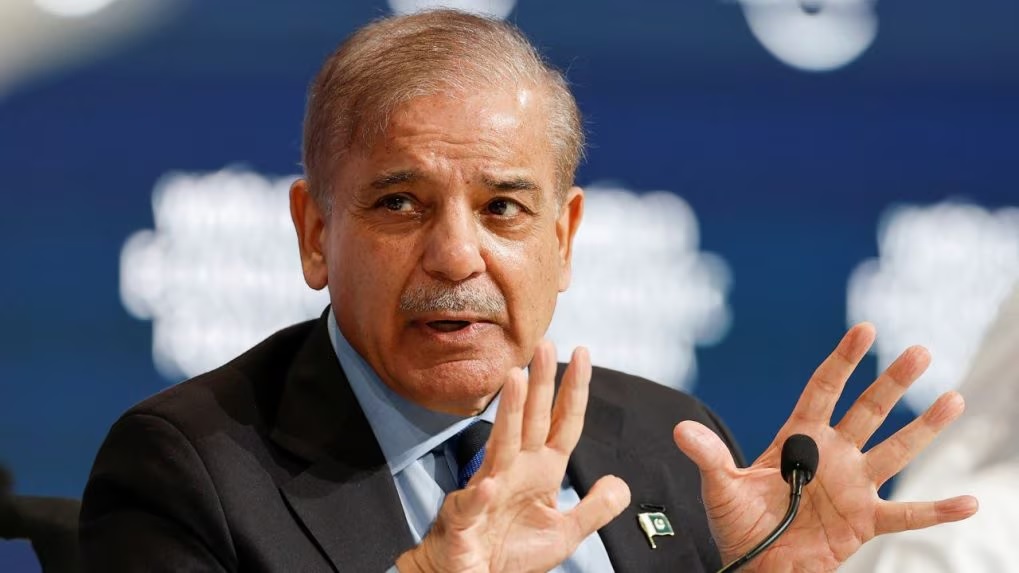 Pakistan Announces 15% Increase in Defence Budget for 2024-25 Amid Economic Crisis
Pakistan Announces 15% Increase in Defence Budget for 2024-25 Amid Economic Crisis
-
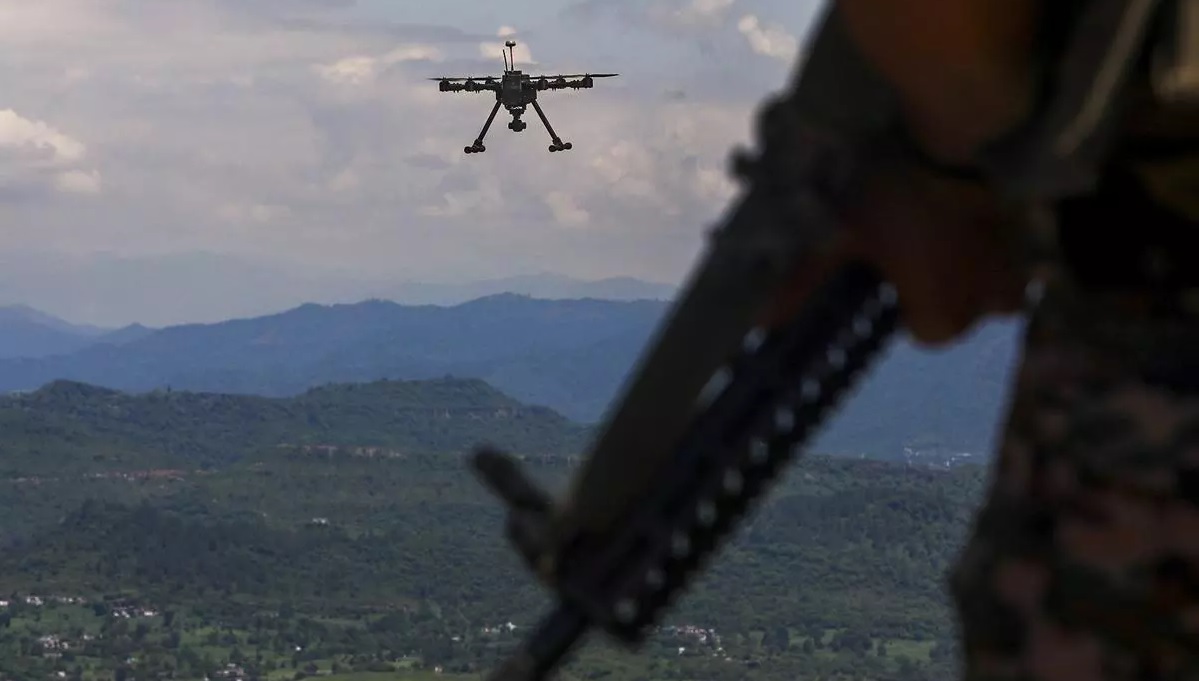 India's Defence Ministry Warns Against Chinese Parts in Military Drones Amid Security Concerns
India's Defence Ministry Warns Against Chinese Parts in Military Drones Amid Security Concerns
-
 China’s Super Radar Detects Mysterious Plasma Bubble Over Giza Pyramids
China’s Super Radar Detects Mysterious Plasma Bubble Over Giza Pyramids
-
 India's Indigenous Kaveri Engine Program with New Focus on Thrust and Performance
India's Indigenous Kaveri Engine Program with New Focus on Thrust and Performance
-
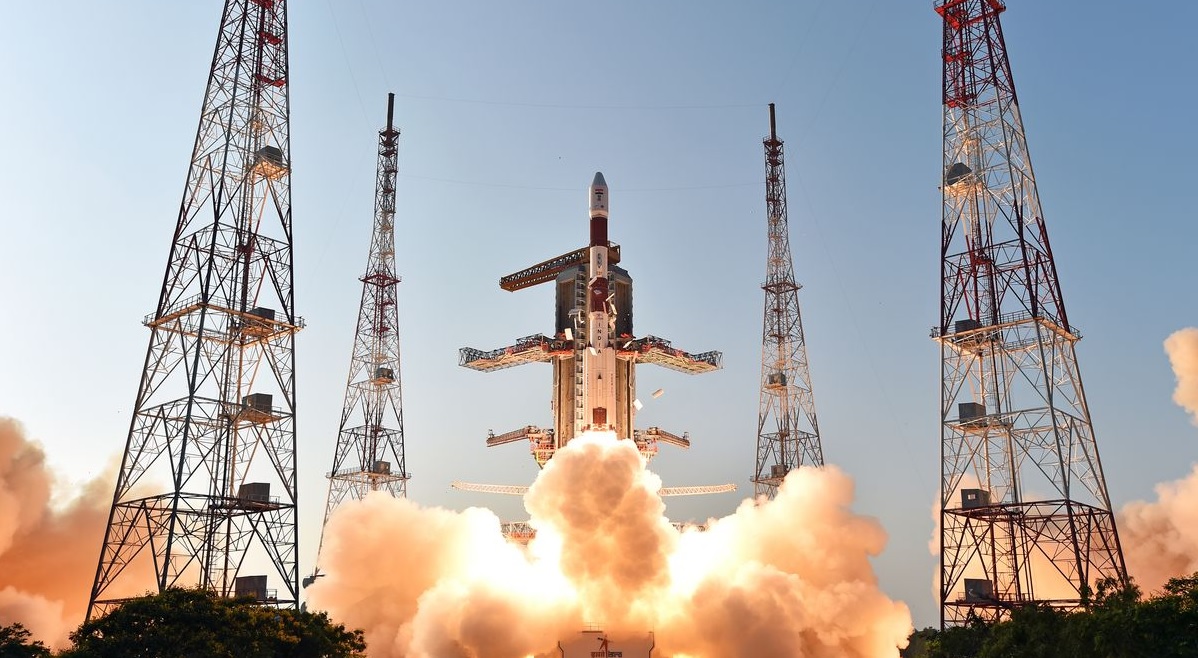 Isro Draws up Ambitious Plan for 2024, says will Launch at Least 12 Missions
Isro Draws up Ambitious Plan for 2024, says will Launch at Least 12 Missions
-
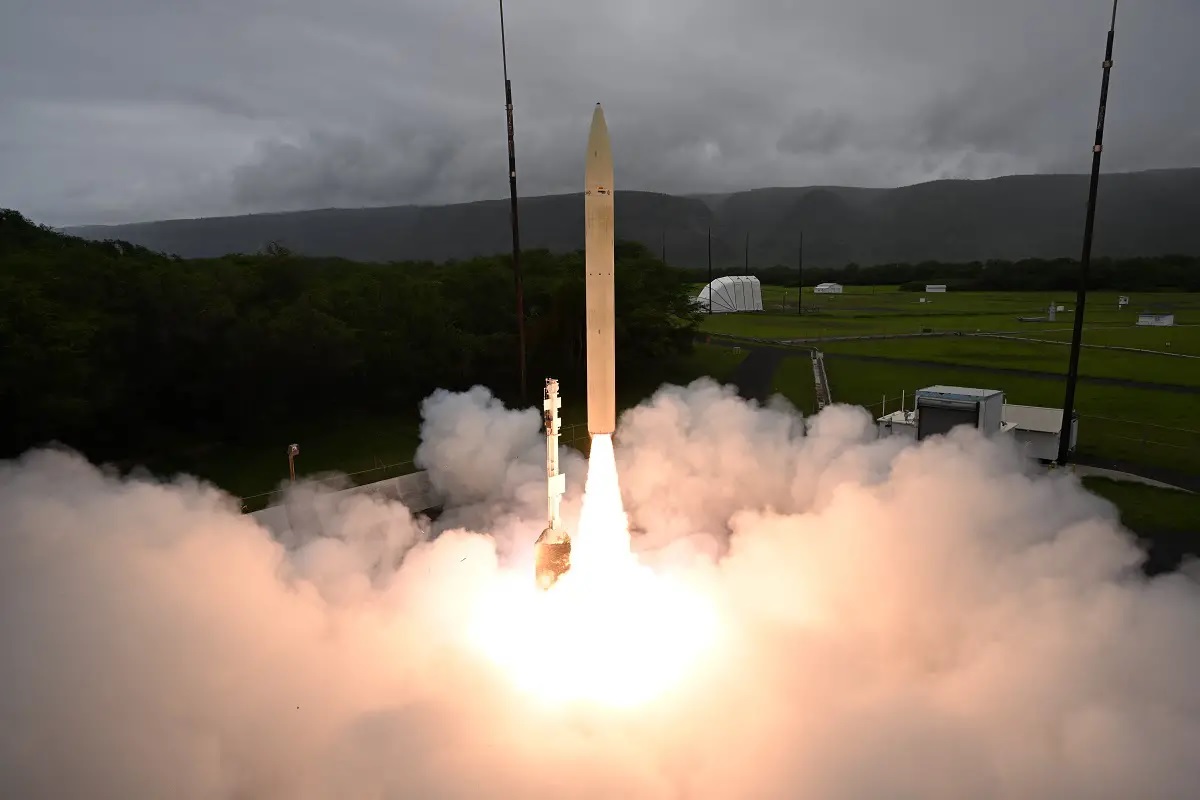 Successful Hypersonic Missile Test by U.S. Department of Defense
Successful Hypersonic Missile Test by U.S. Department of Defense
Top Trending in 4 Days
-
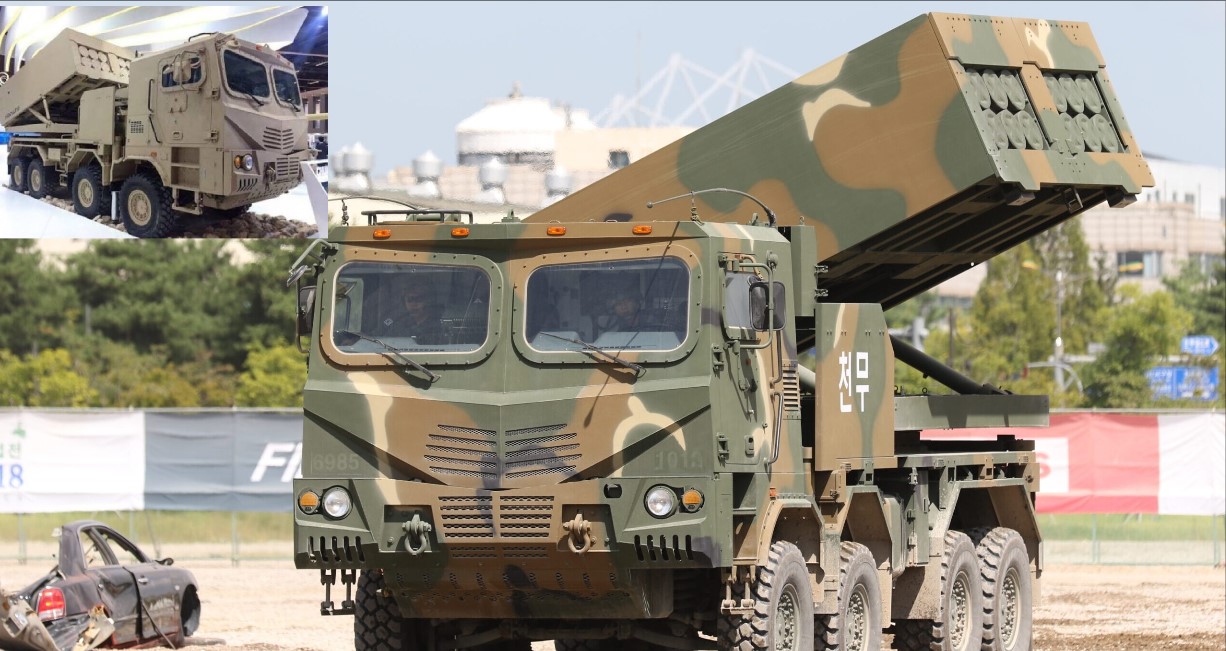 South Korea’s K239 Chunmoo Rocket Artillery Spotted in Saudi Arabia
South Korea’s K239 Chunmoo Rocket Artillery Spotted in Saudi Arabia
-
 Peru to Acquire South Korea's K2 Black Panther Tanks
Peru to Acquire South Korea's K2 Black Panther Tanks
-
 Russia Launches Massive Missile and Drone Attacks on Ukraine's infrastructure
Russia Launches Massive Missile and Drone Attacks on Ukraine's infrastructure
-
 Russia Reports Interception of 44 Ukrainian Drones Including 20 over Novgorod region
Russia Reports Interception of 44 Ukrainian Drones Including 20 over Novgorod region
-
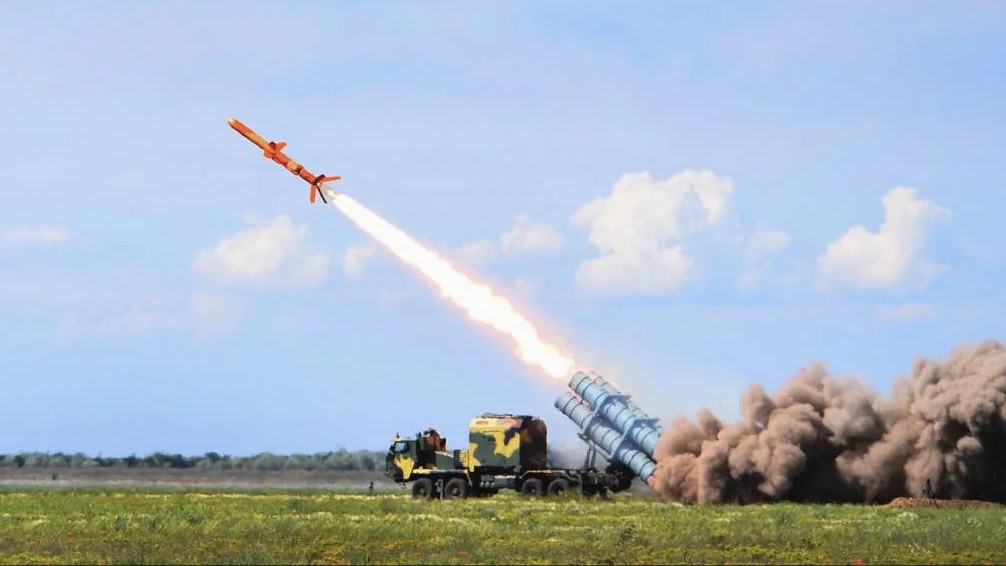 Ukraine Scales Up Neptune Missile Production: Over 100 Units Manufactured with Enhanced Range
Ukraine Scales Up Neptune Missile Production: Over 100 Units Manufactured with Enhanced Range
-
 Advancing Space Tech for Defense: ICEYE Leads Finland's F-35 Industrial Participation Program
Advancing Space Tech for Defense: ICEYE Leads Finland's F-35 Industrial Participation Program
-
 Taiwan Strengthens Communication Resilience with LEO Satellites, Make War-Proof its communications networks
Taiwan Strengthens Communication Resilience with LEO Satellites, Make War-Proof its communications networks
-
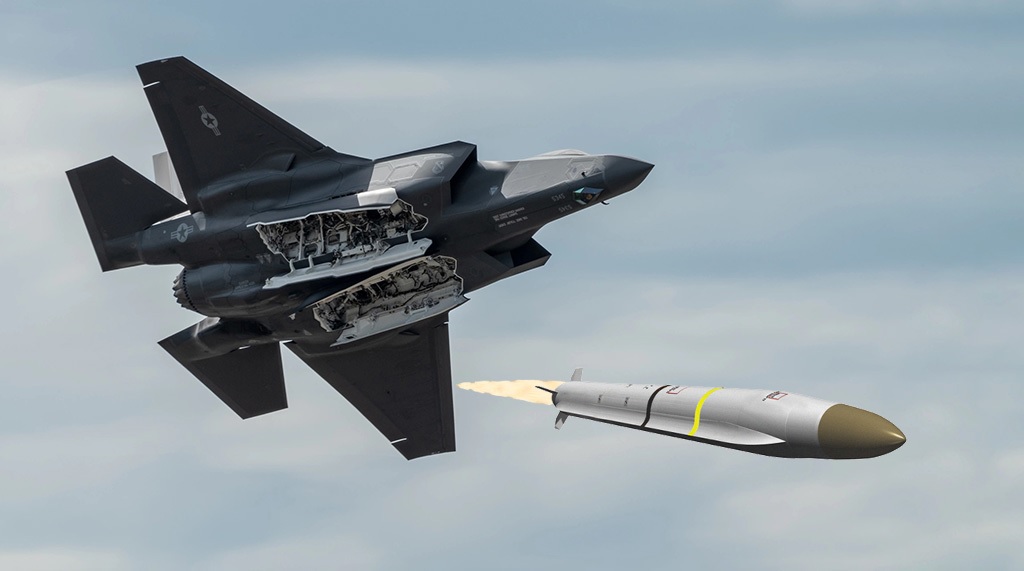 Northrop Grumman Delivers Advanced SiAW Missile for U.S. Air Force Testing
Northrop Grumman Delivers Advanced SiAW Missile for U.S. Air Force Testing
